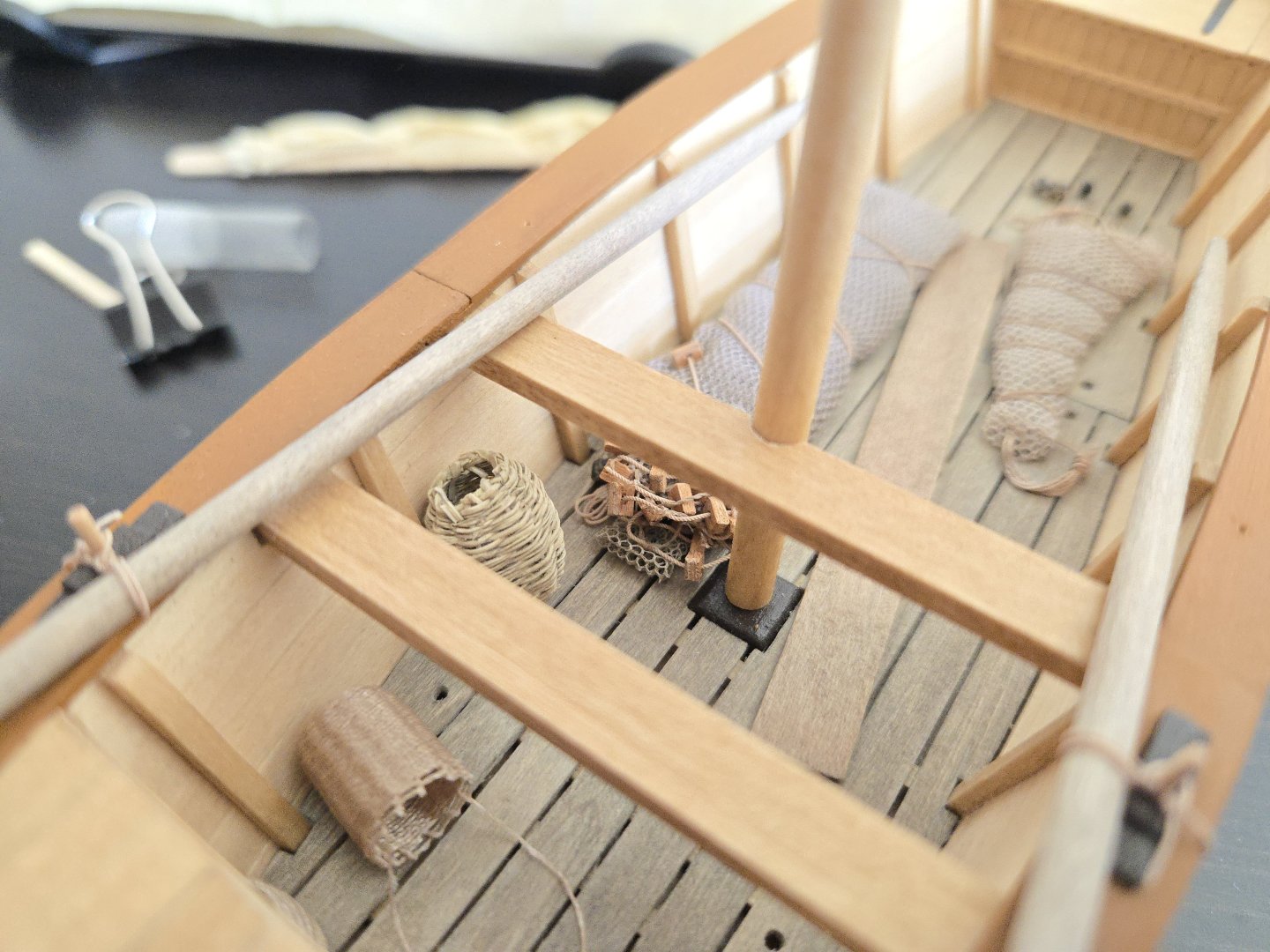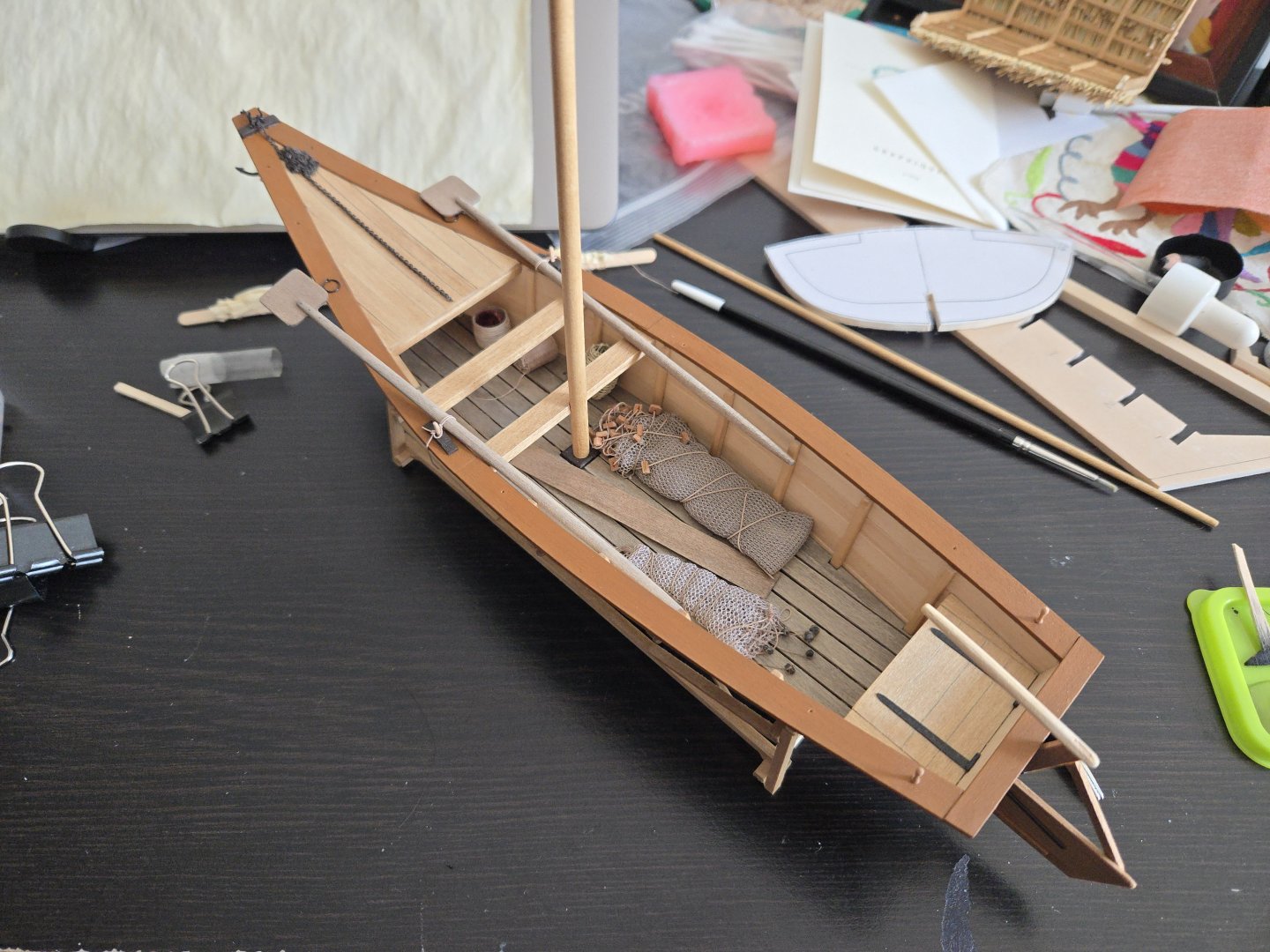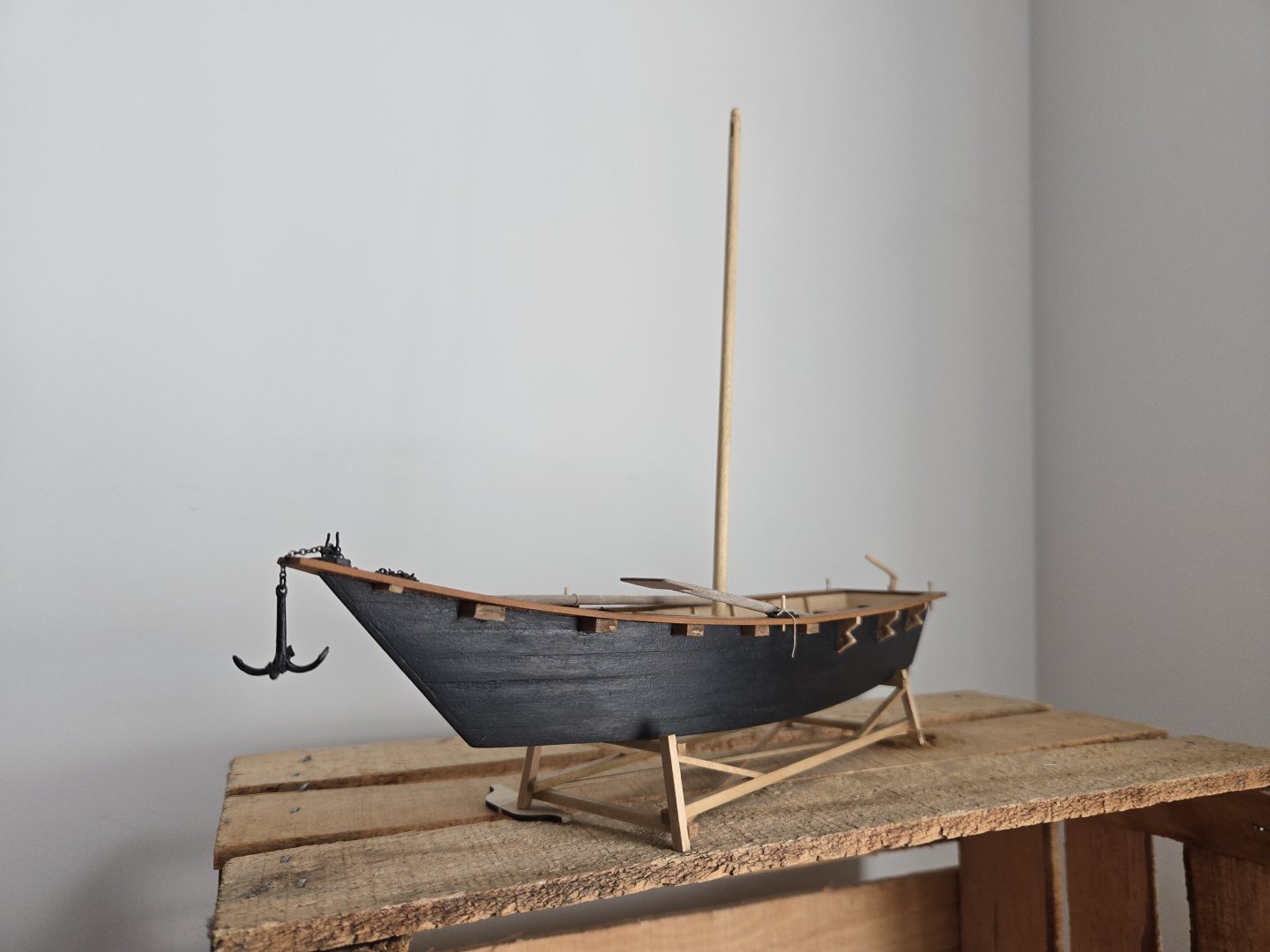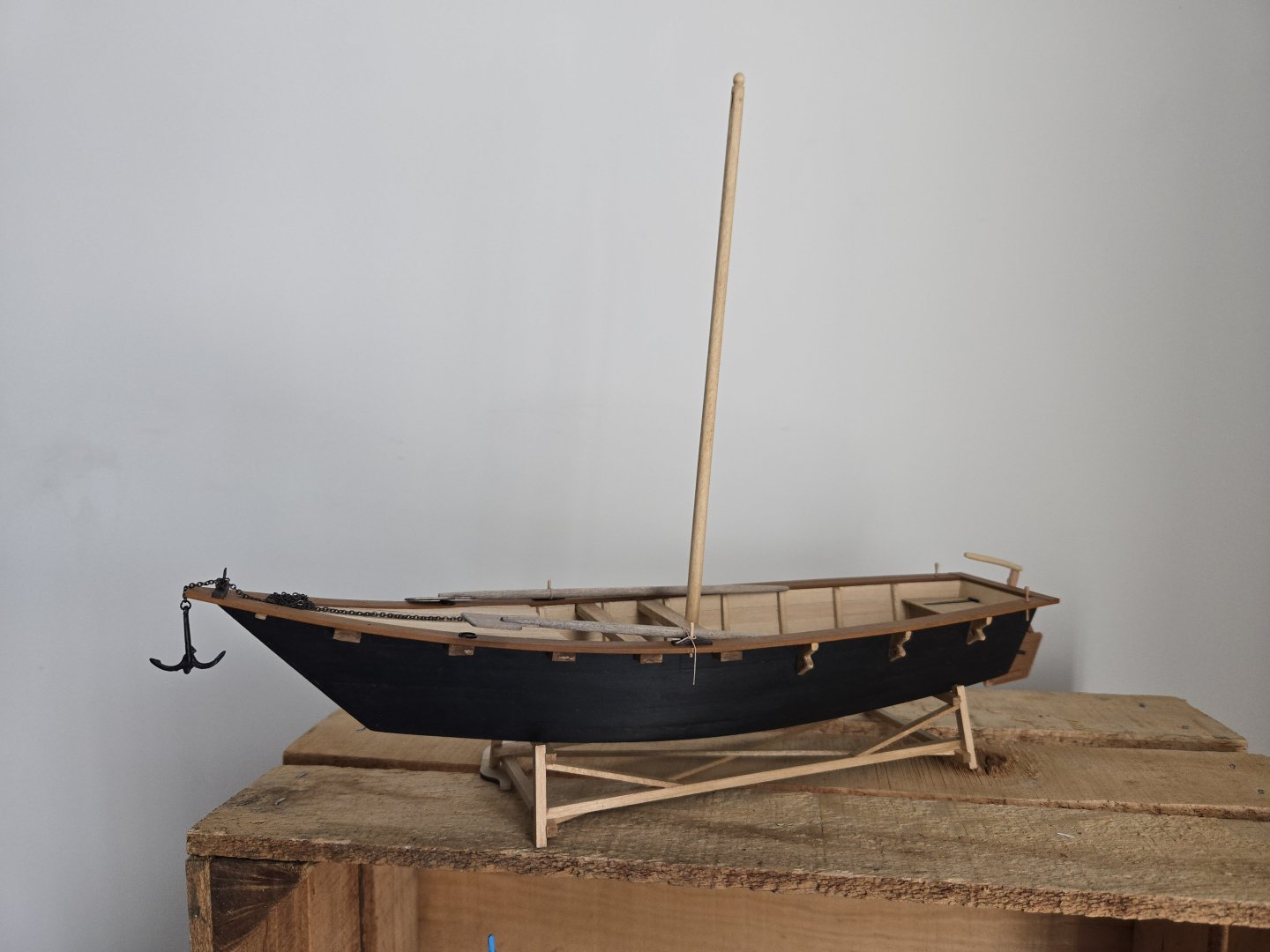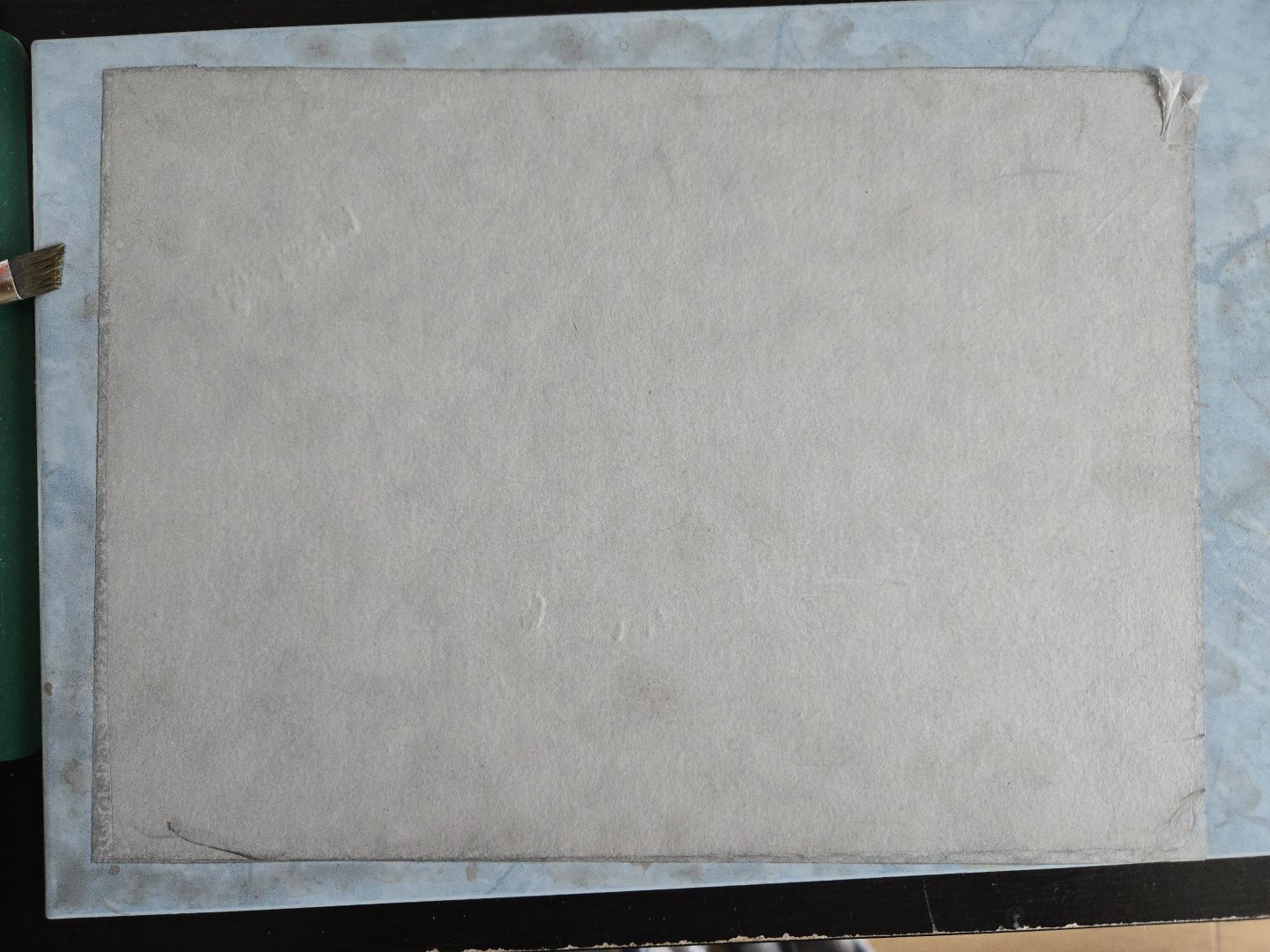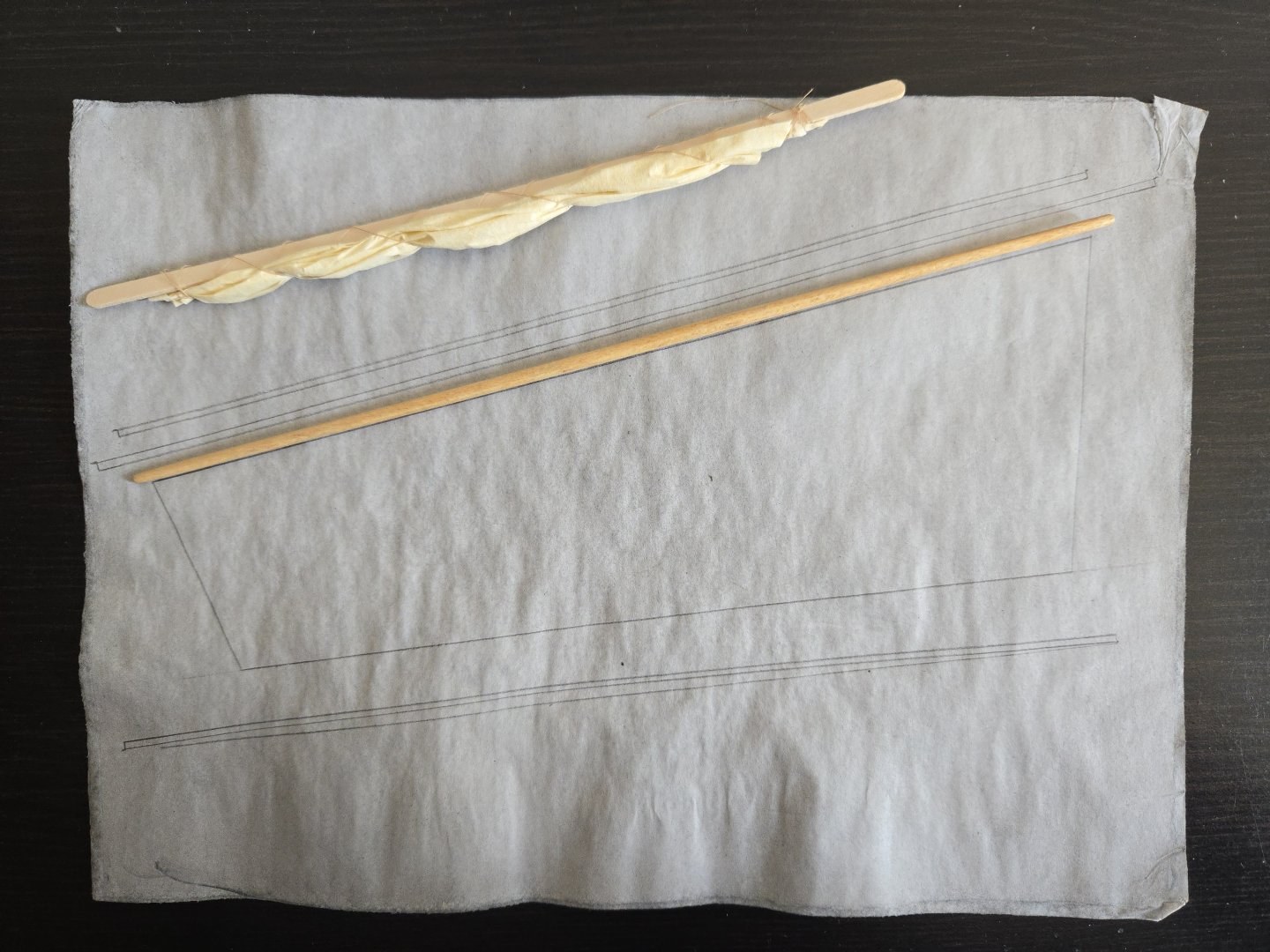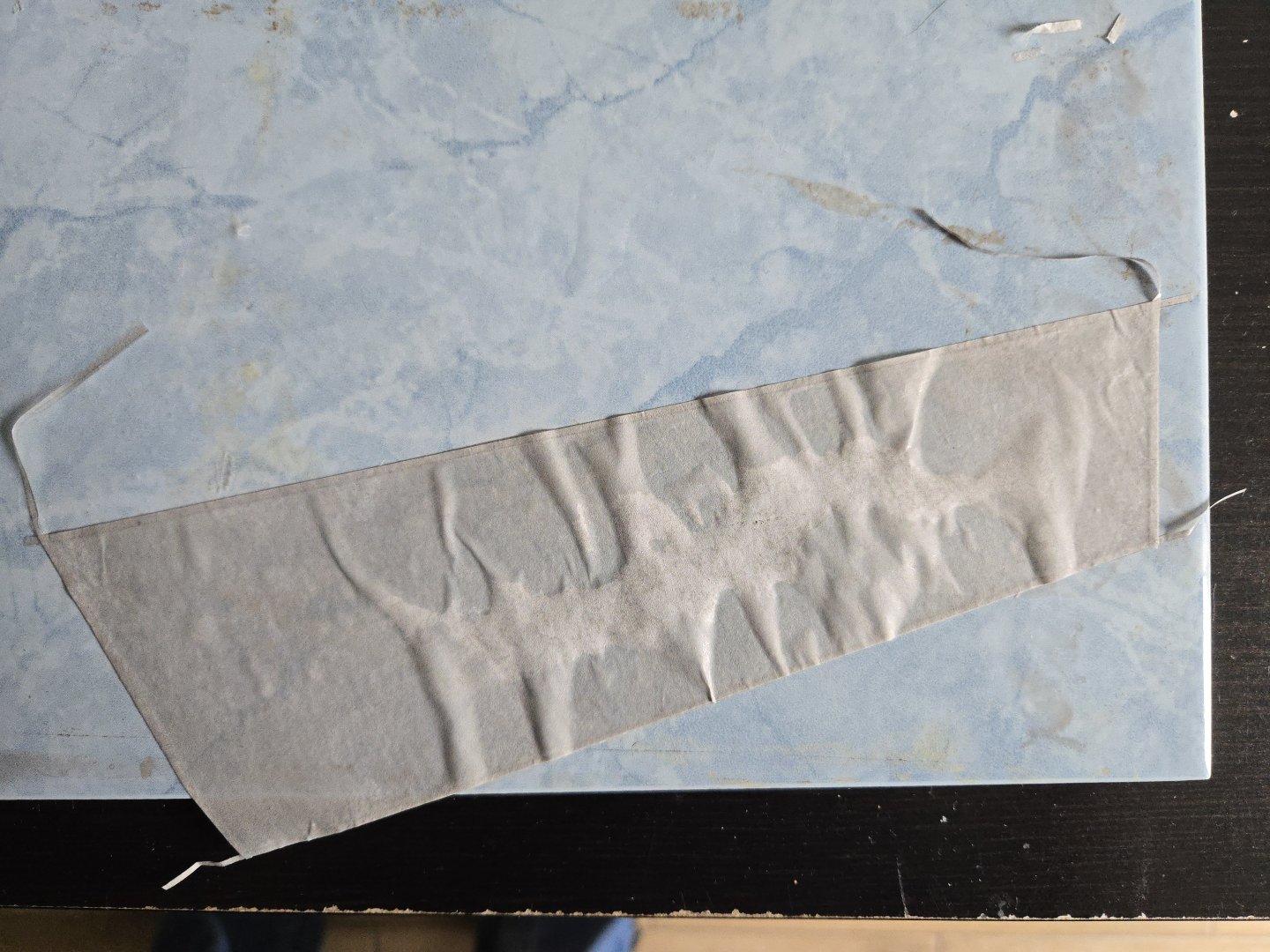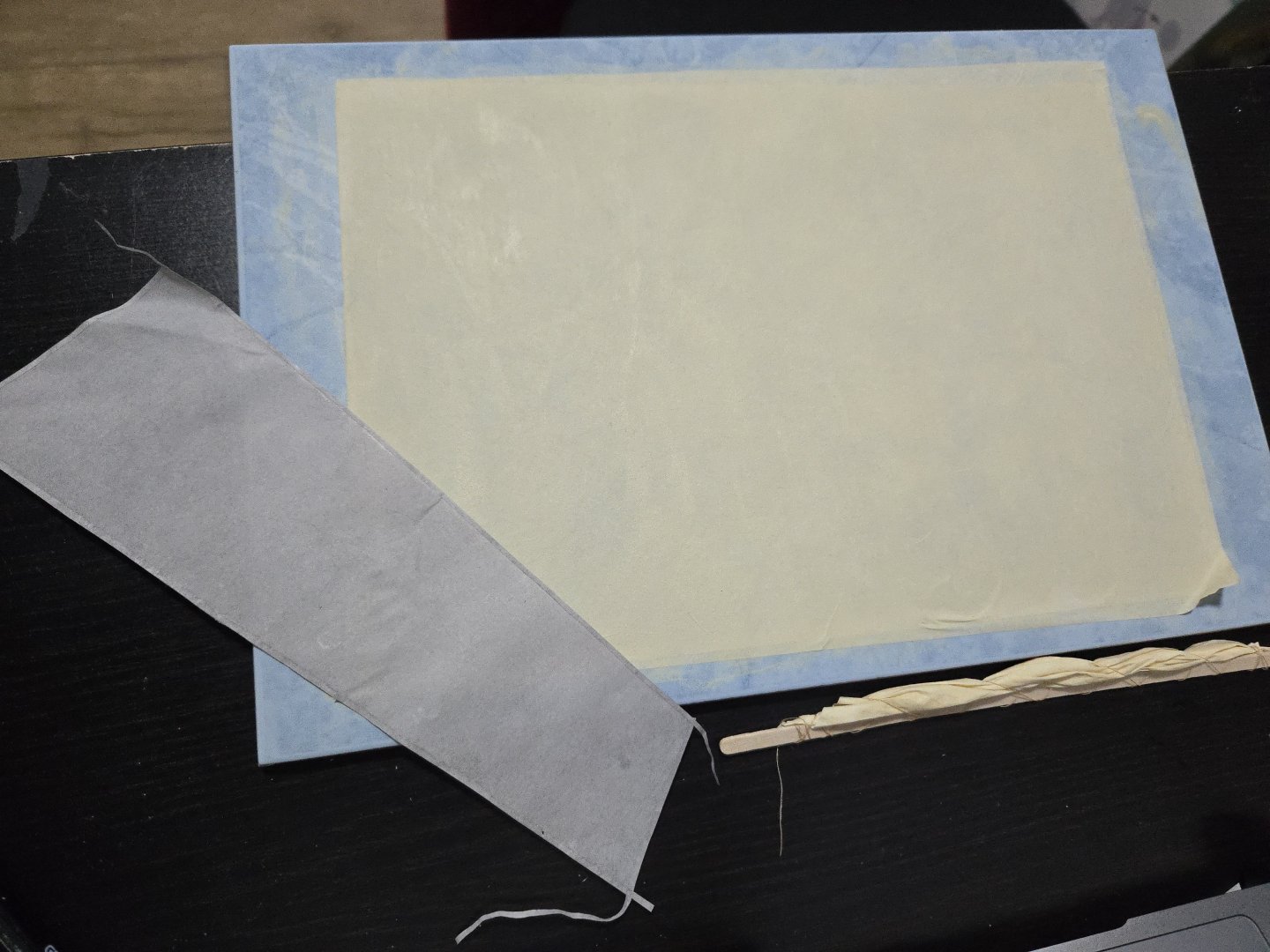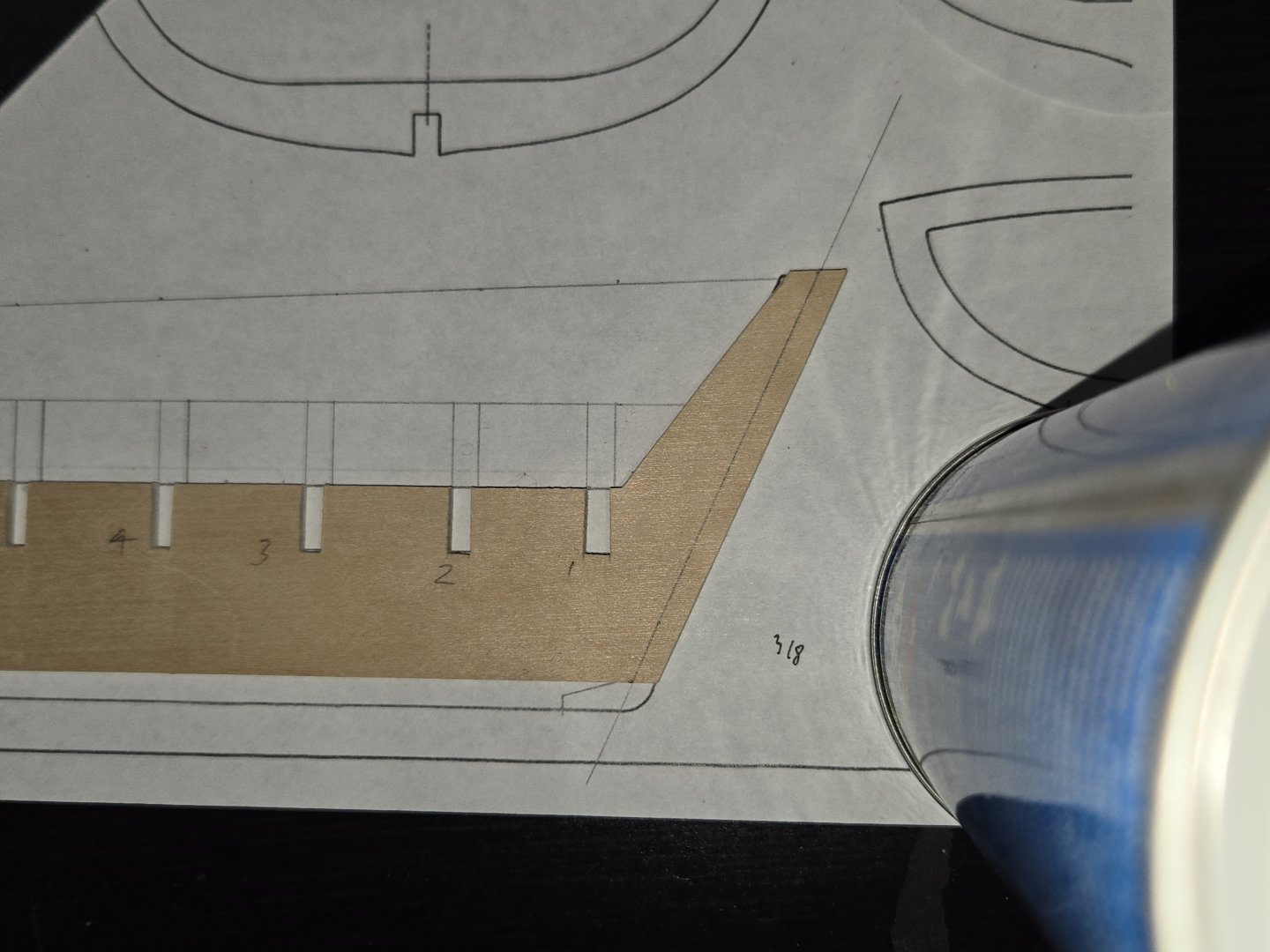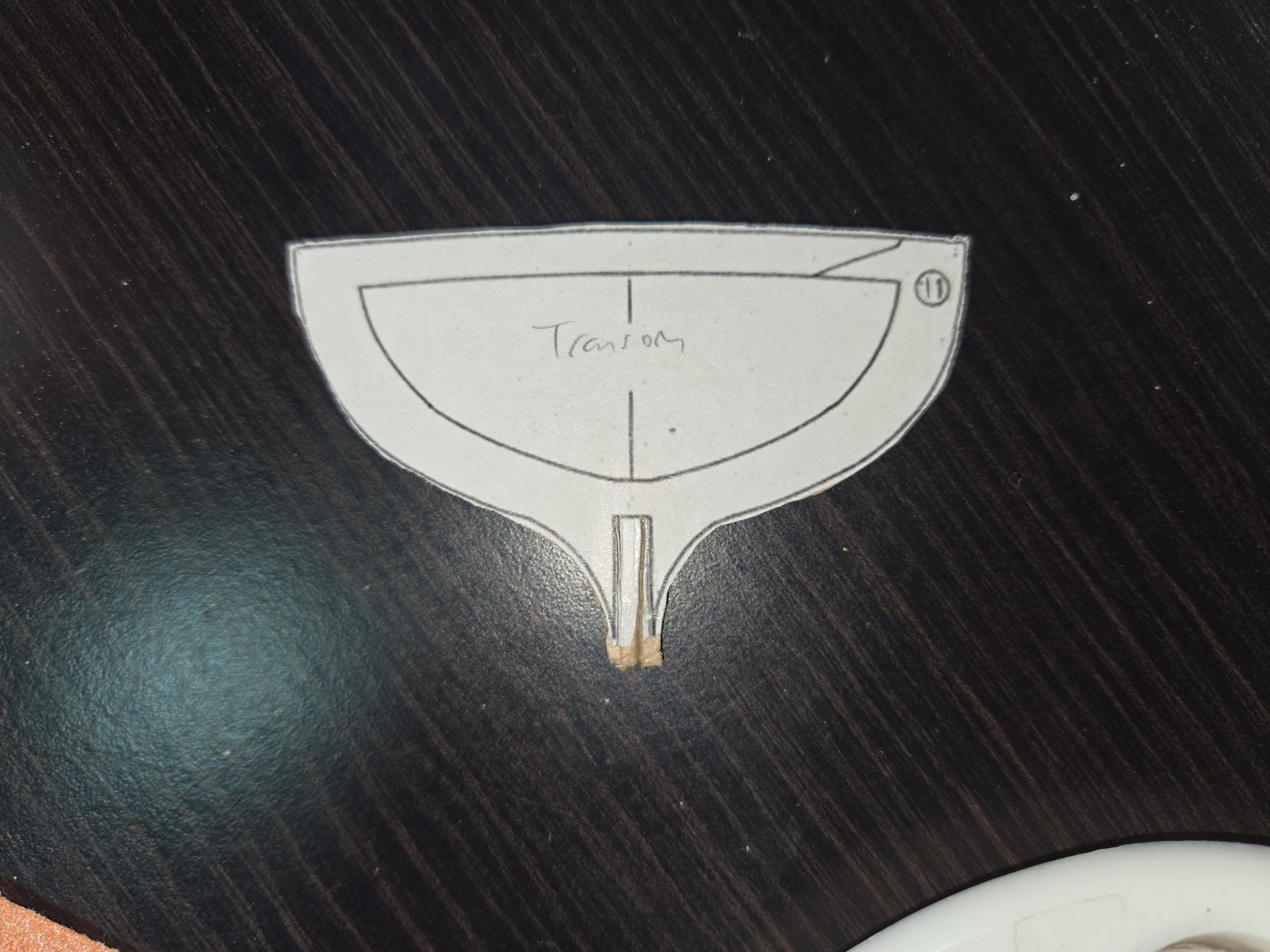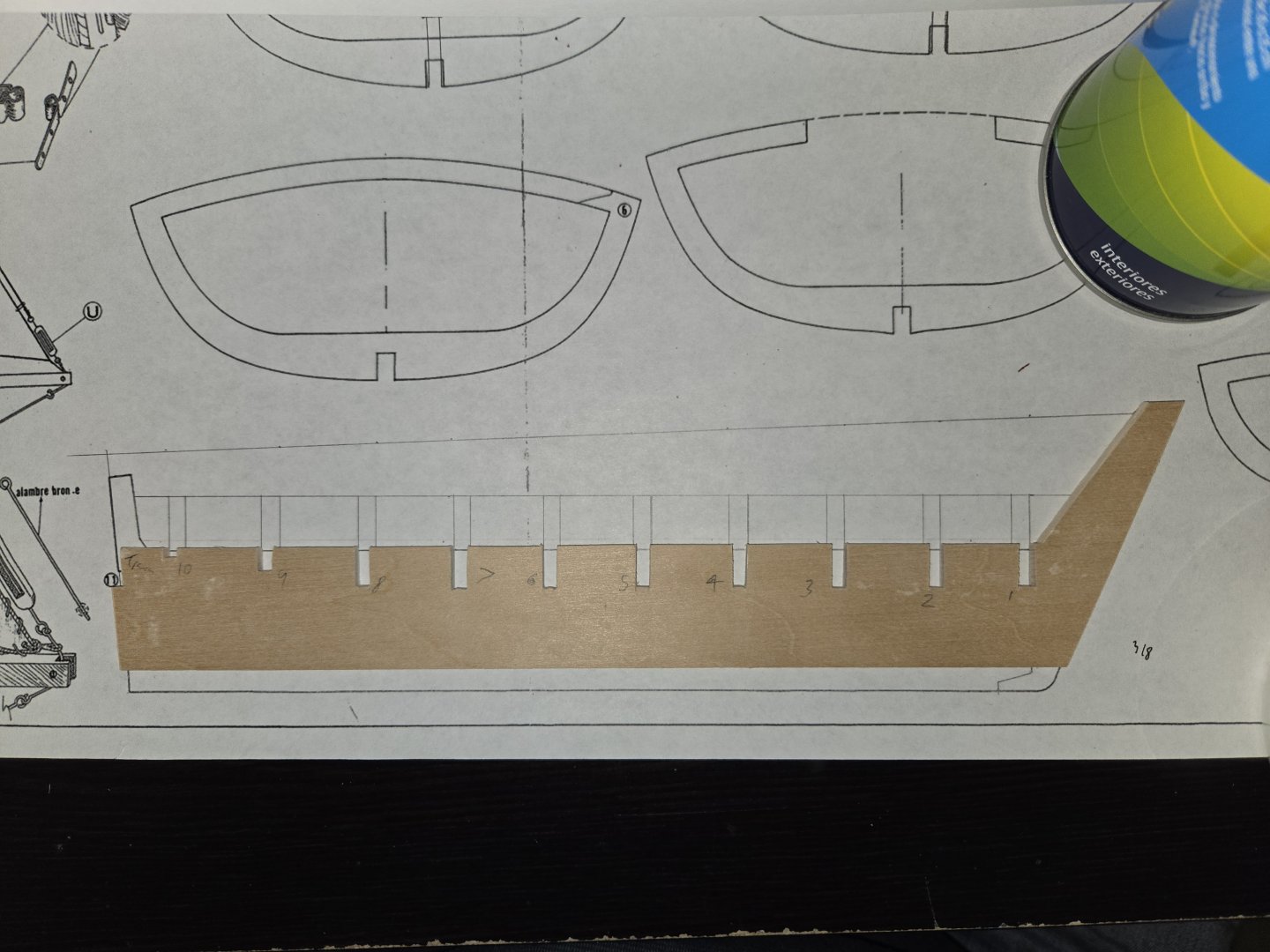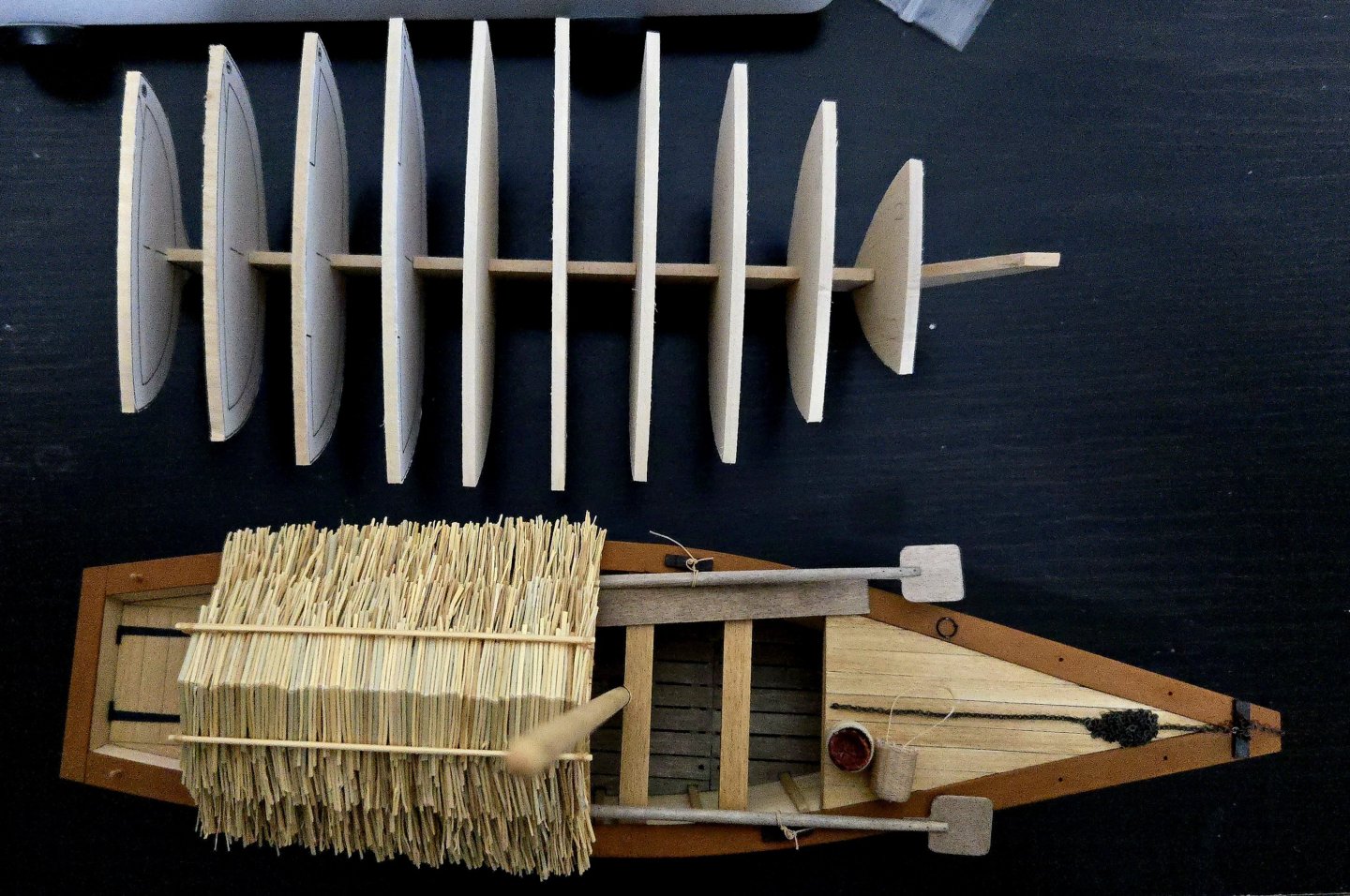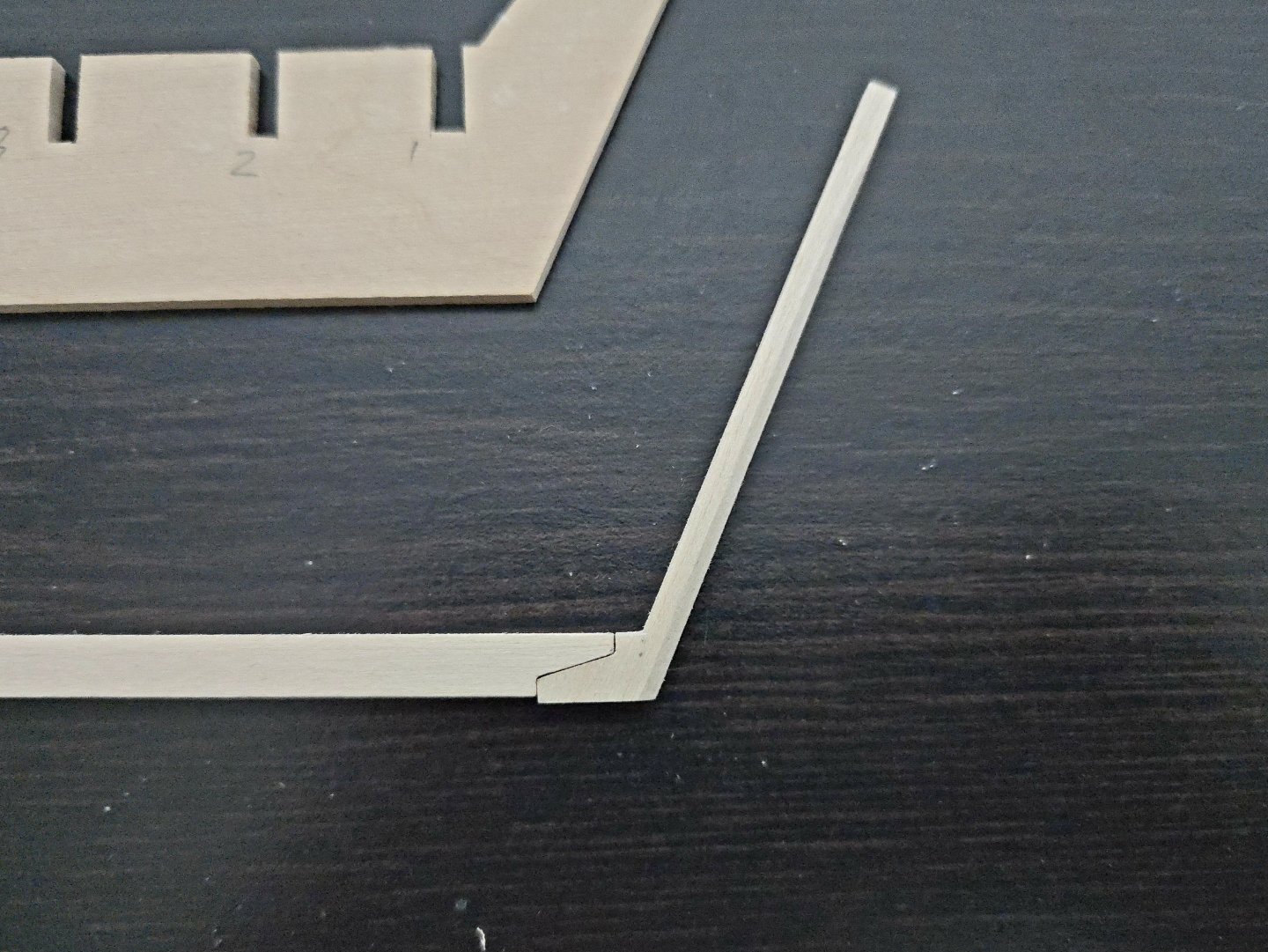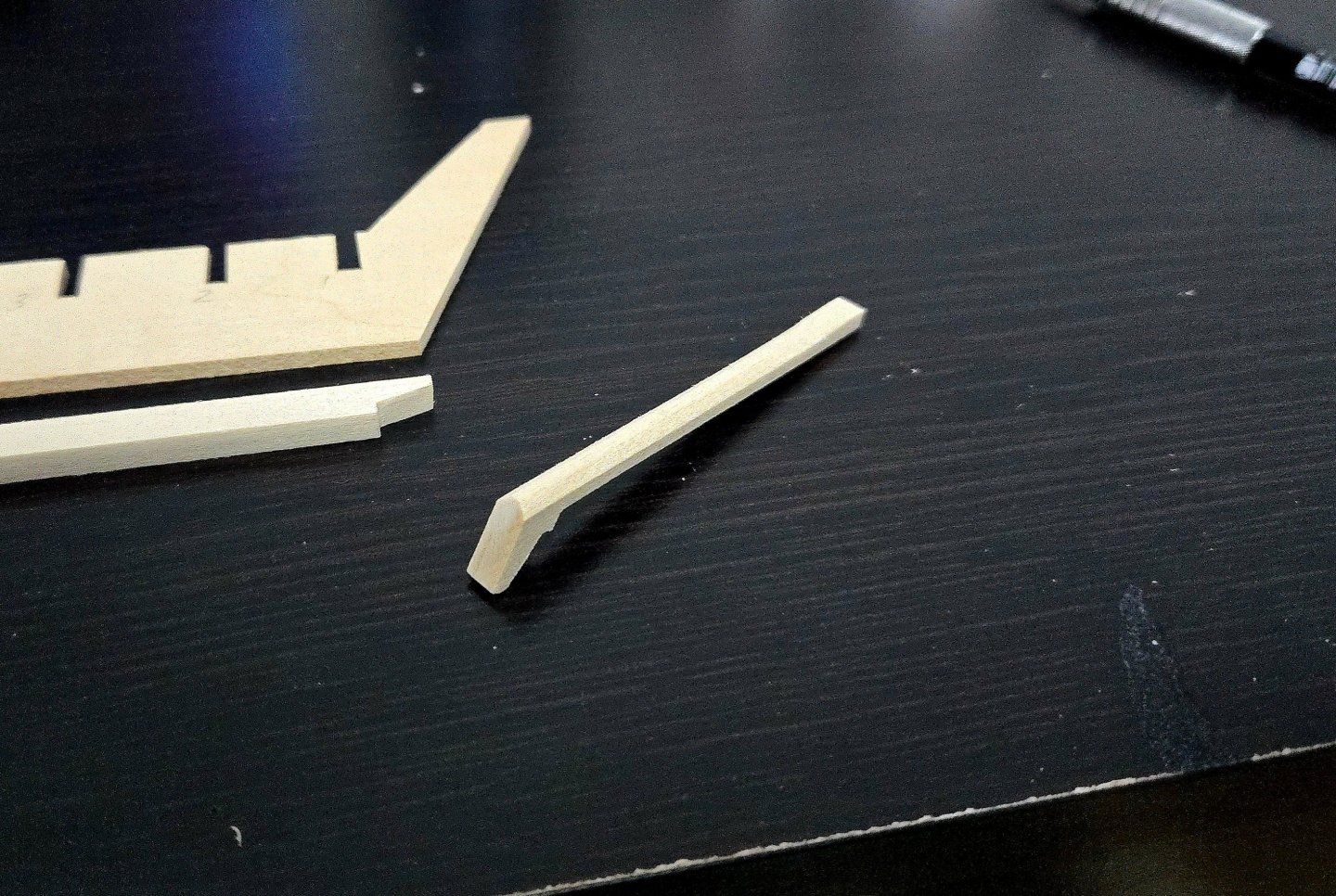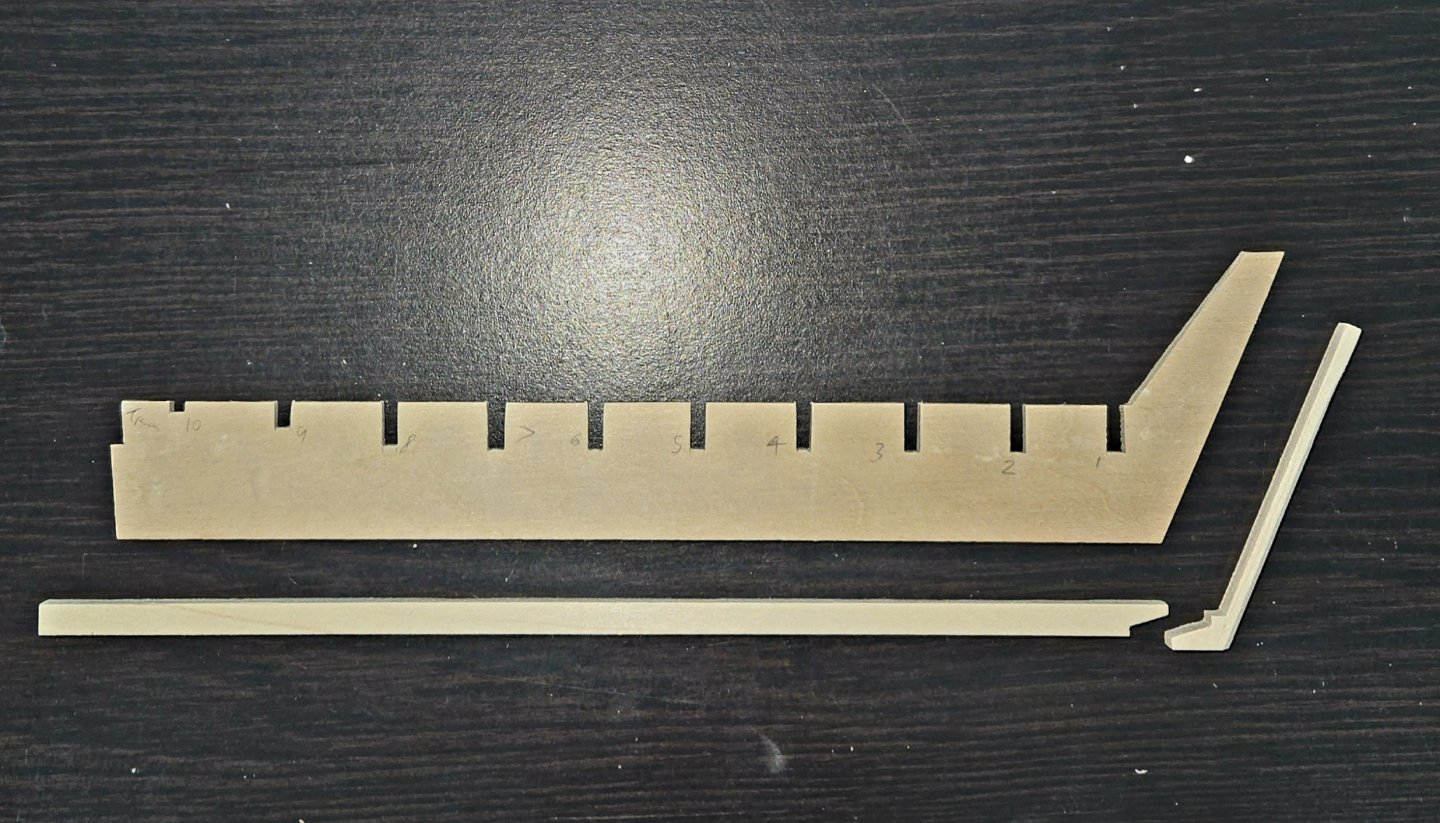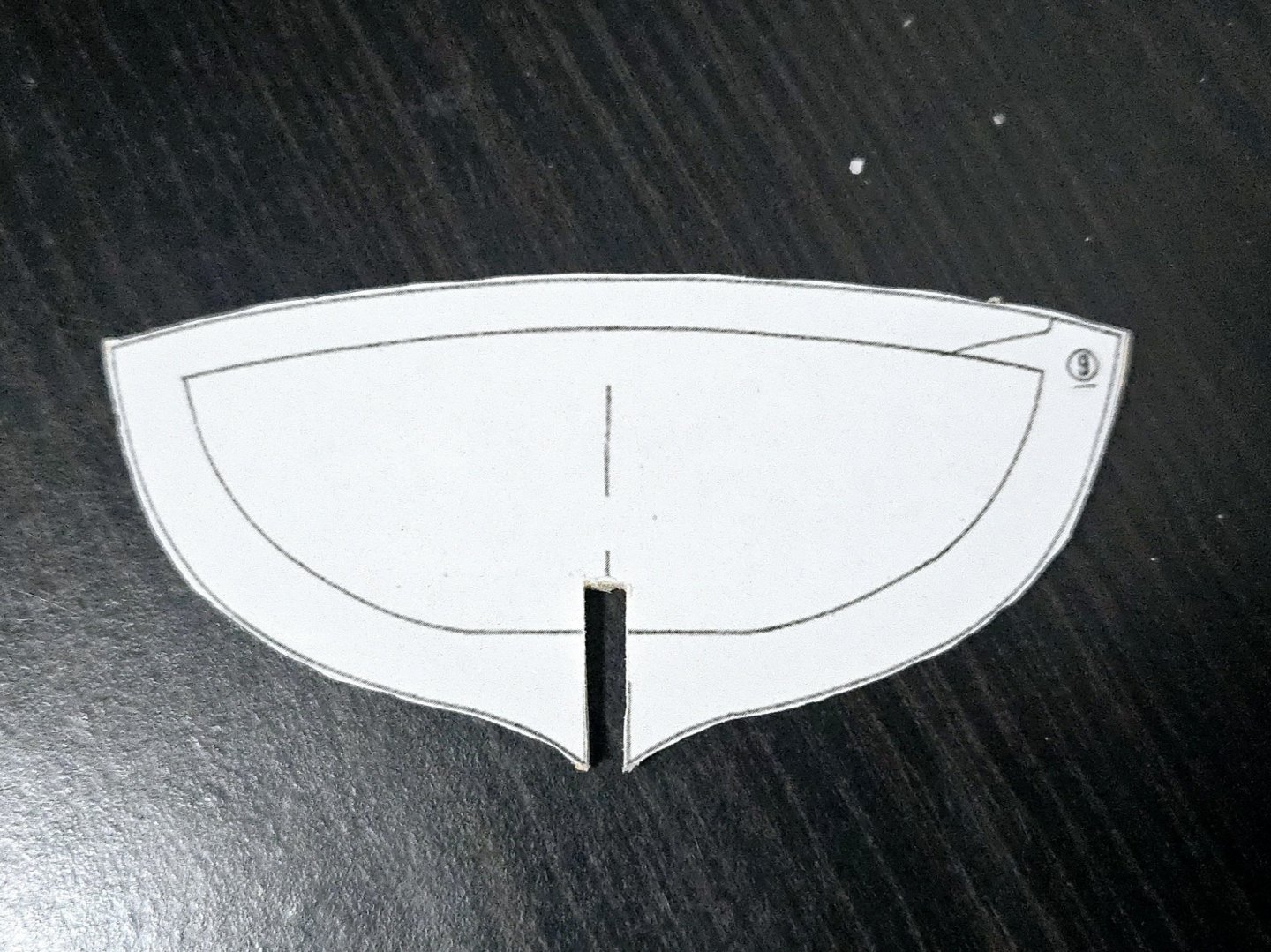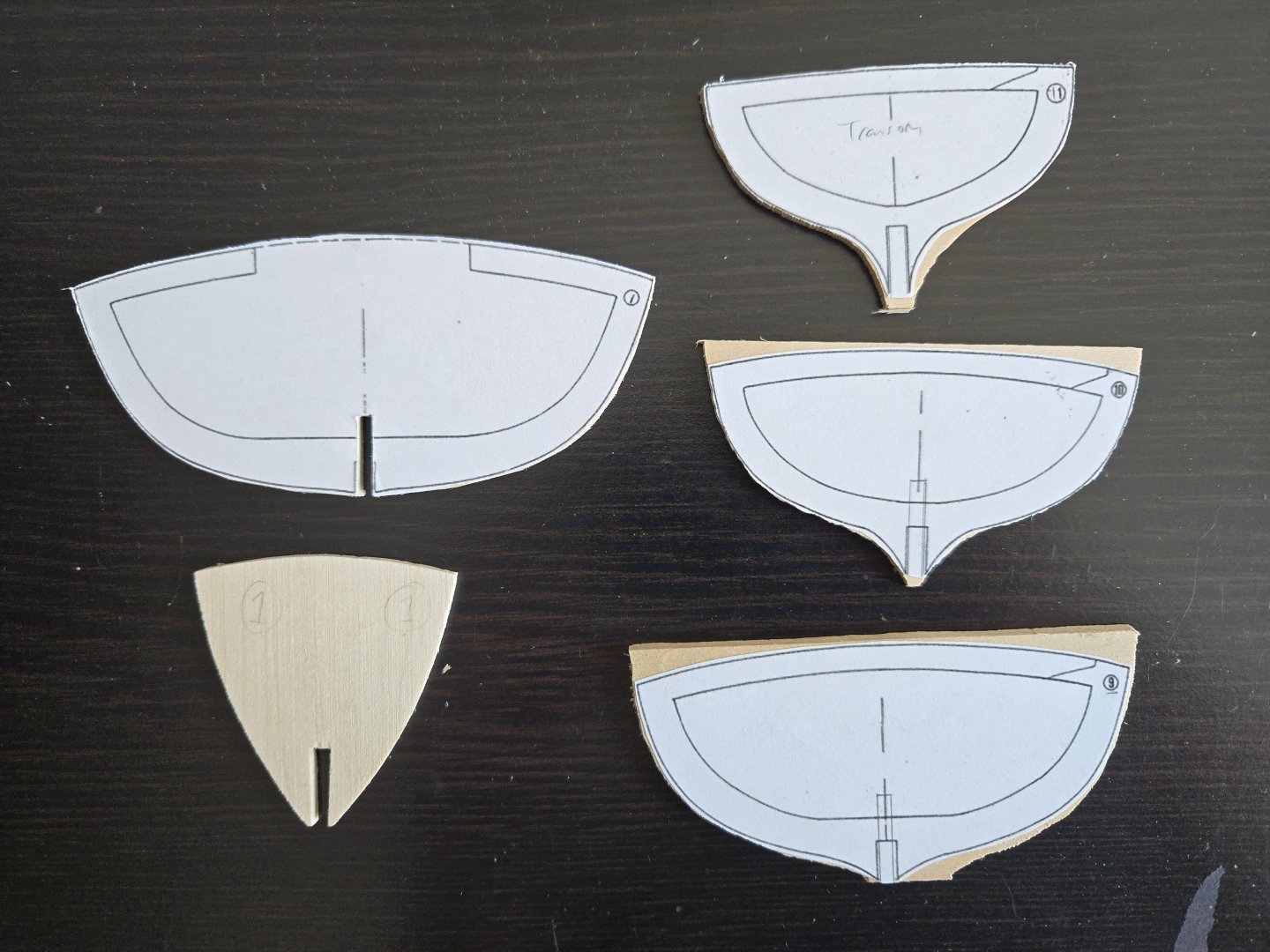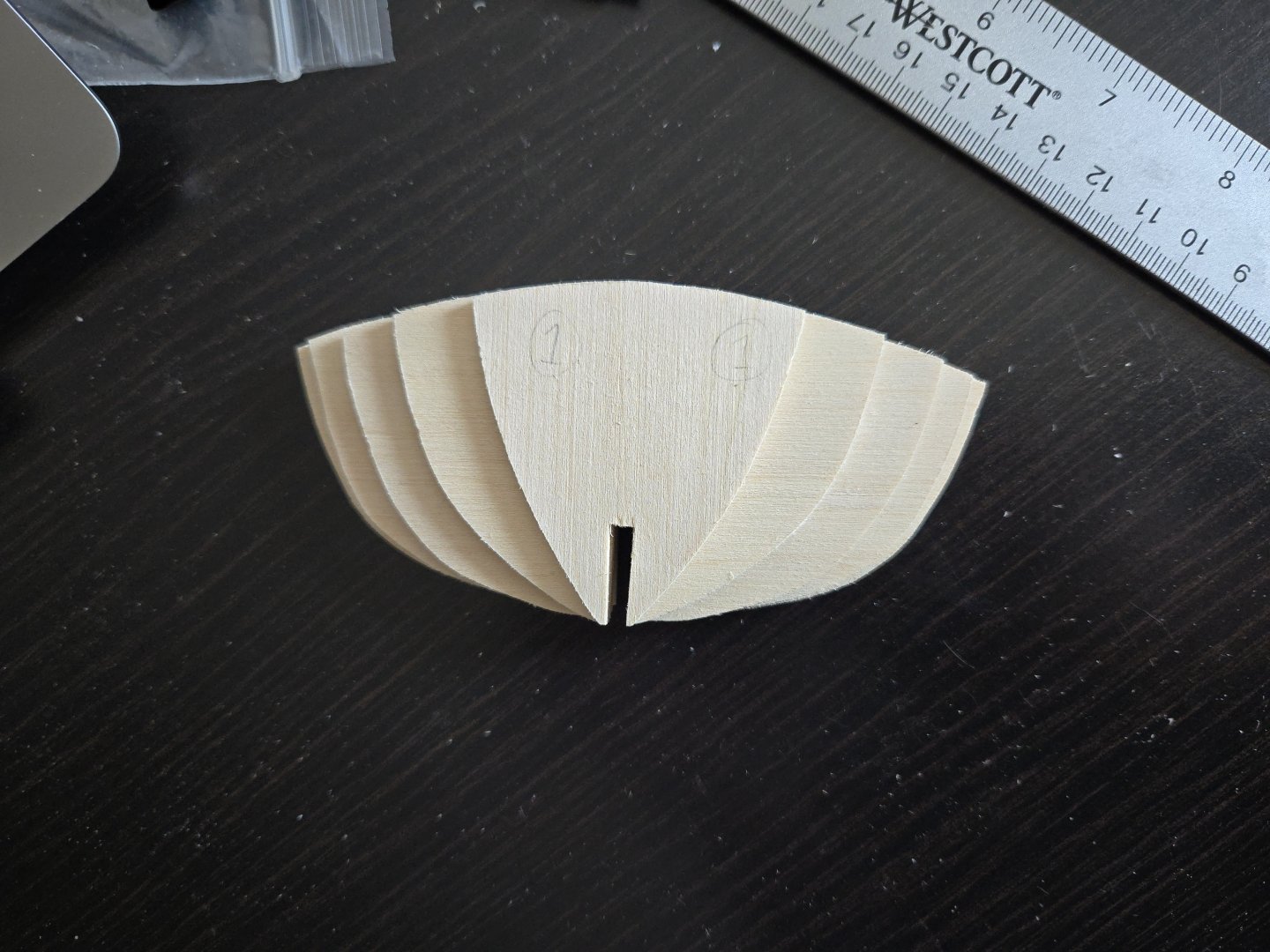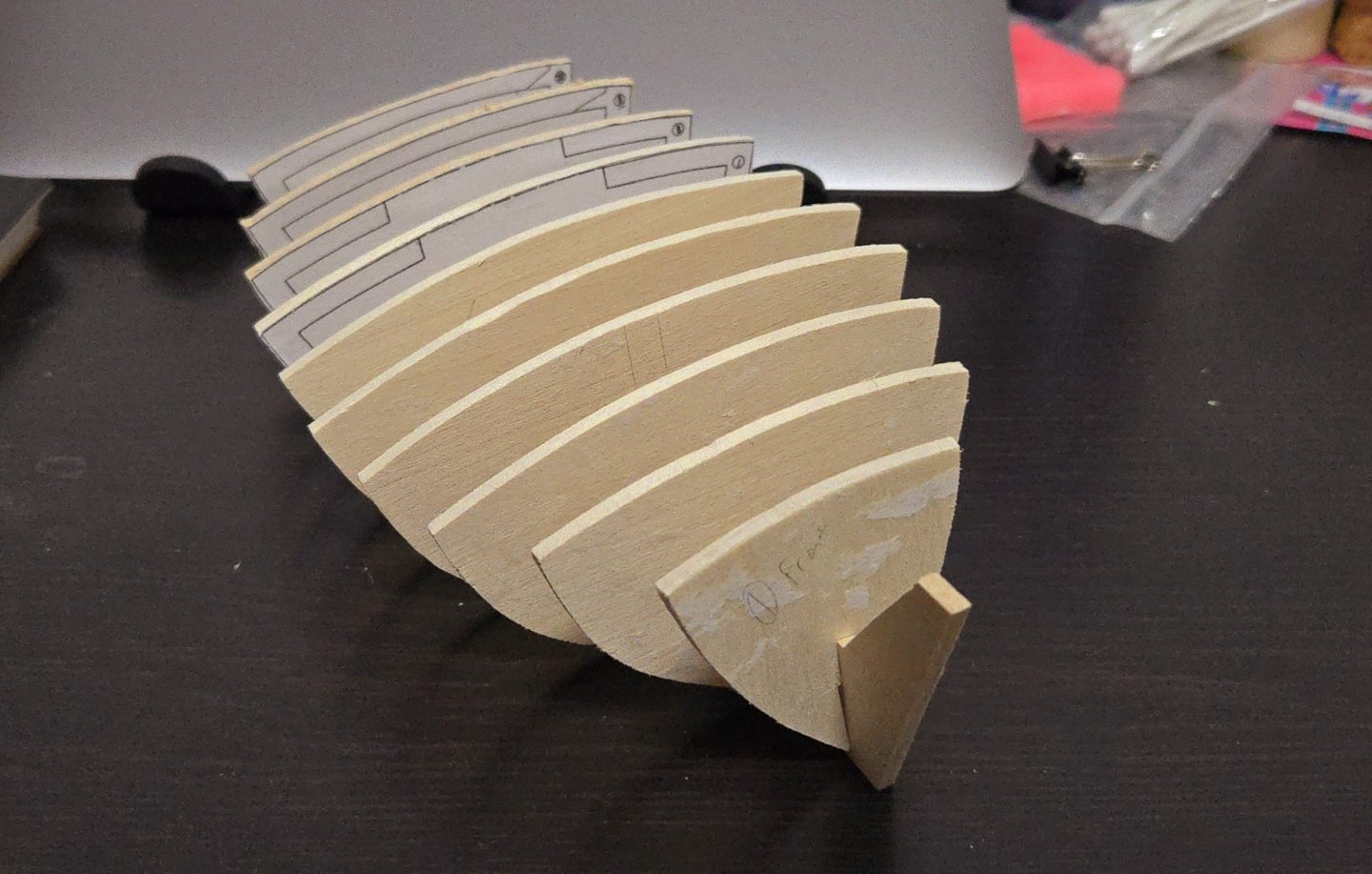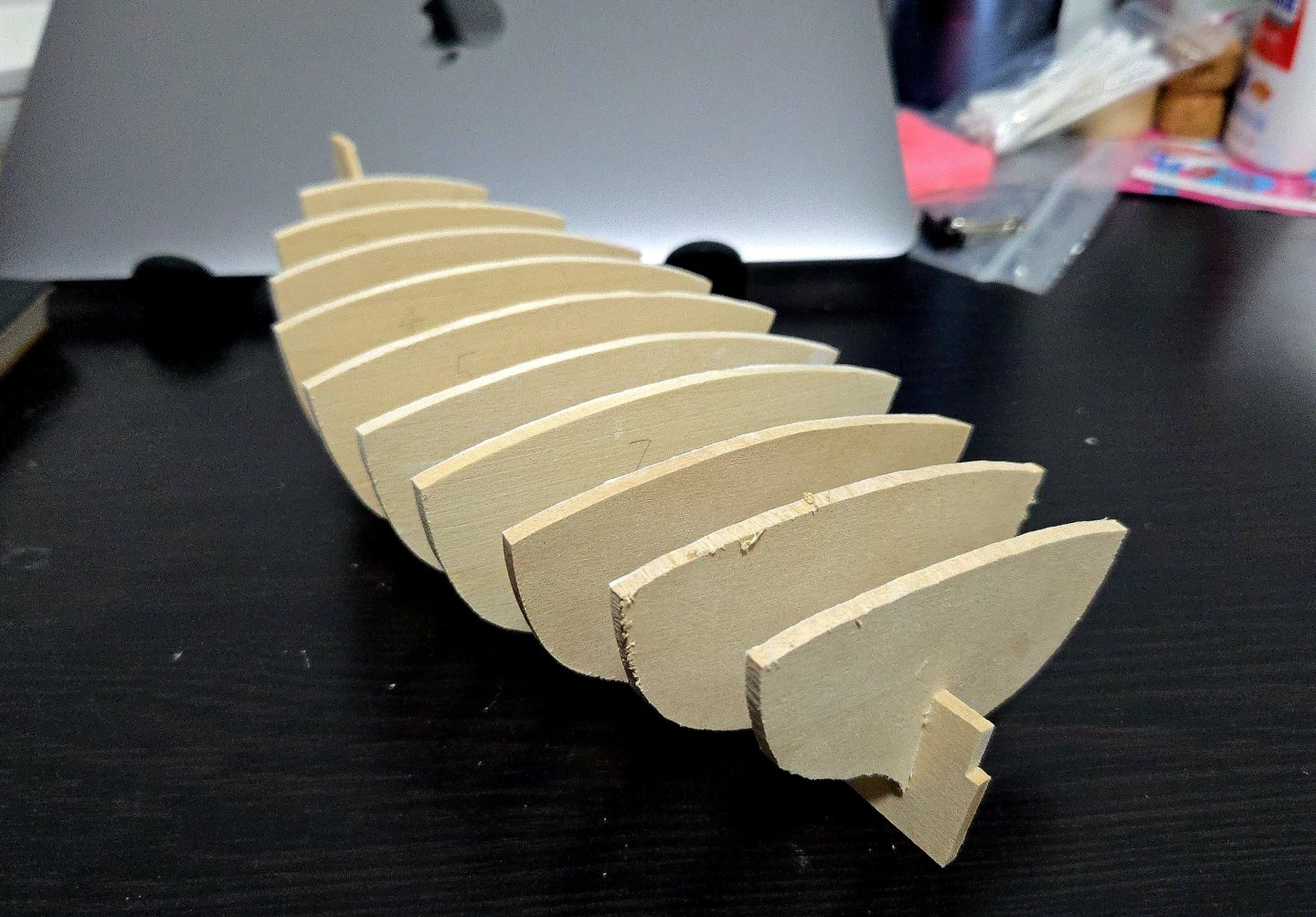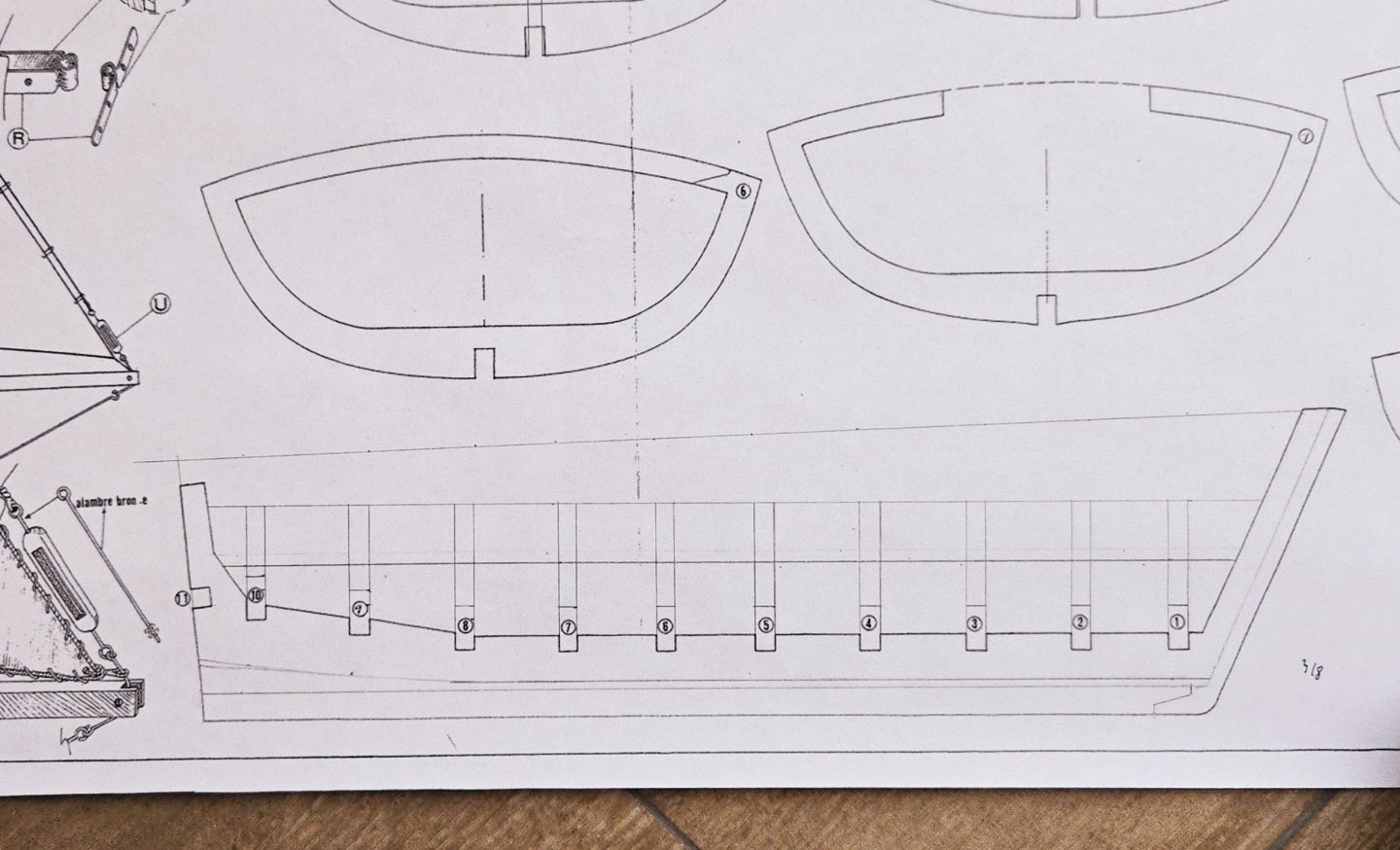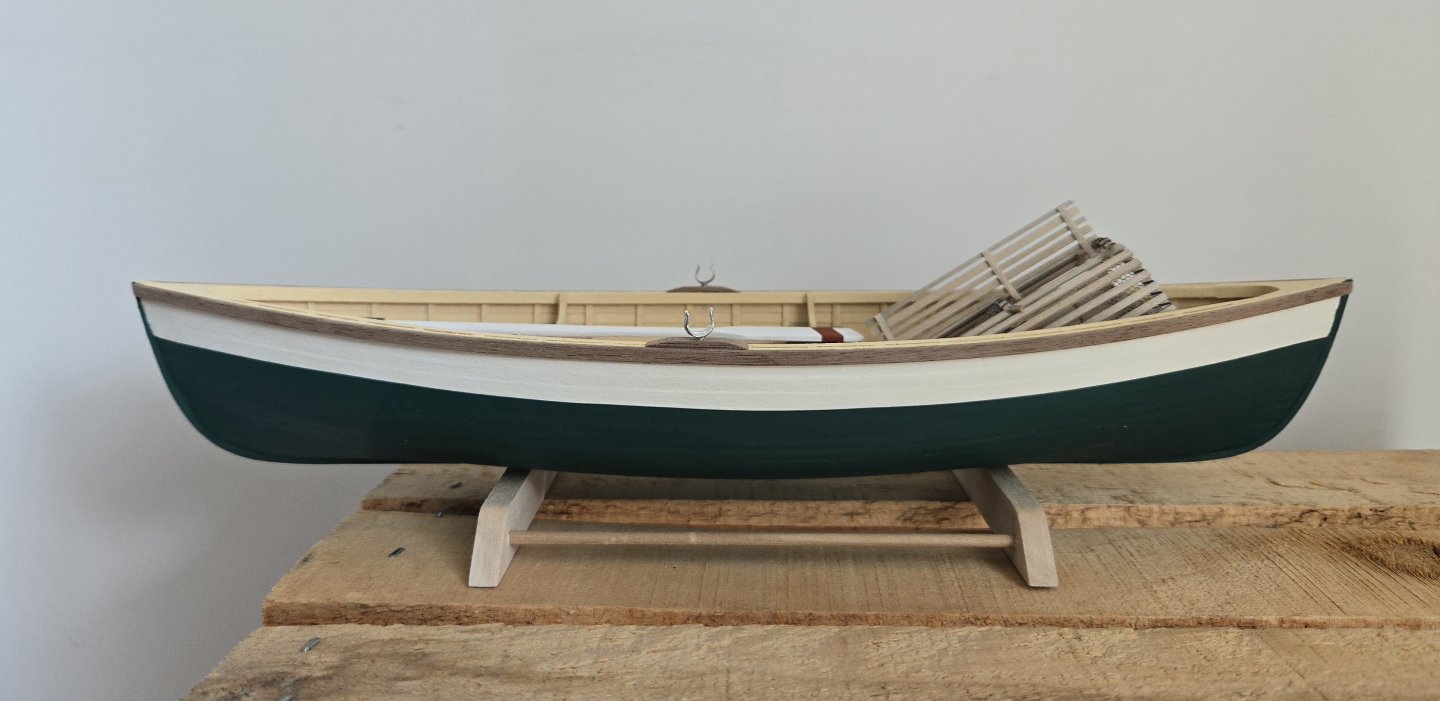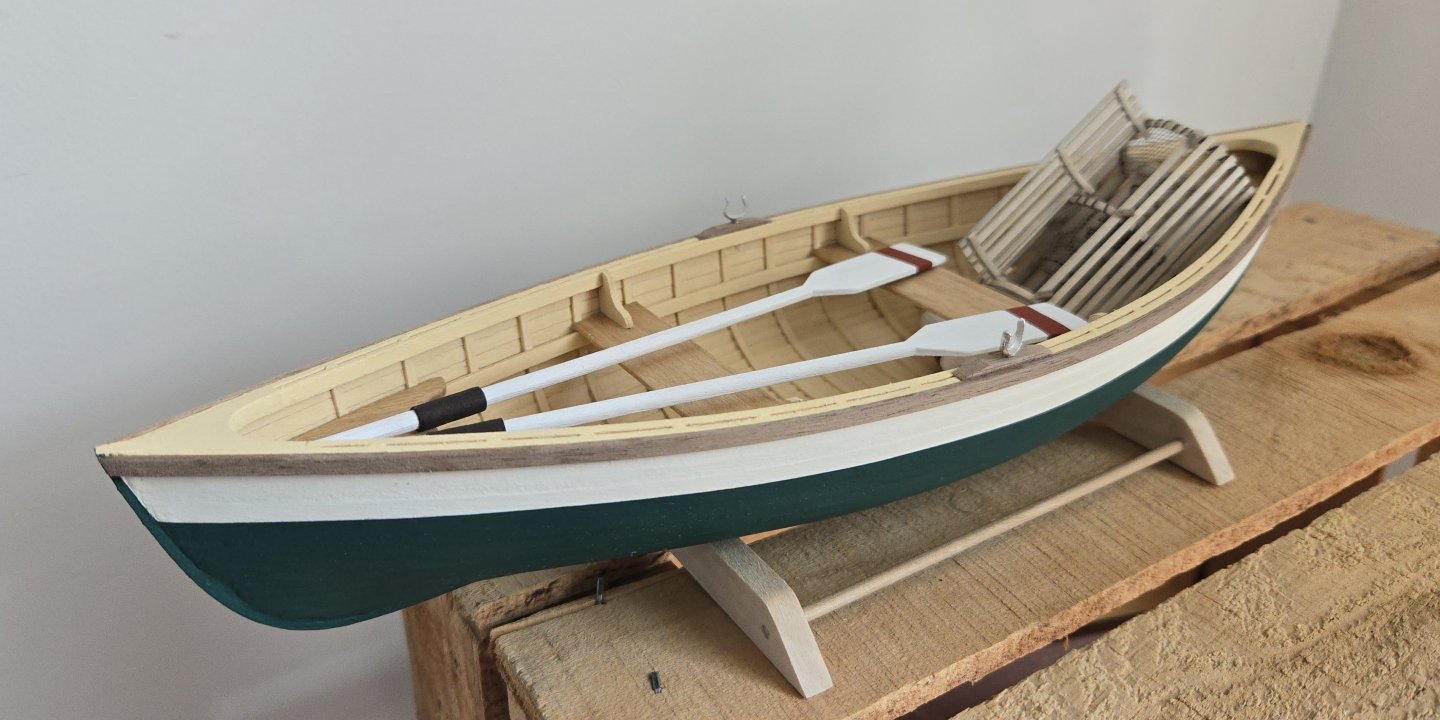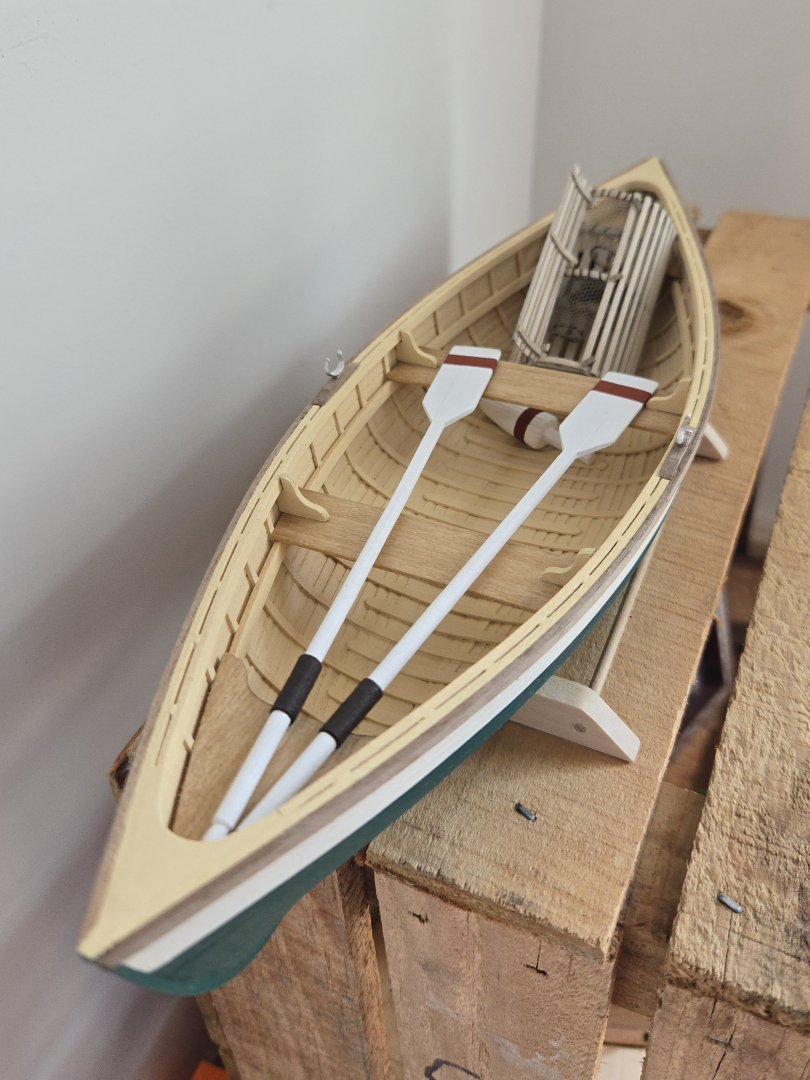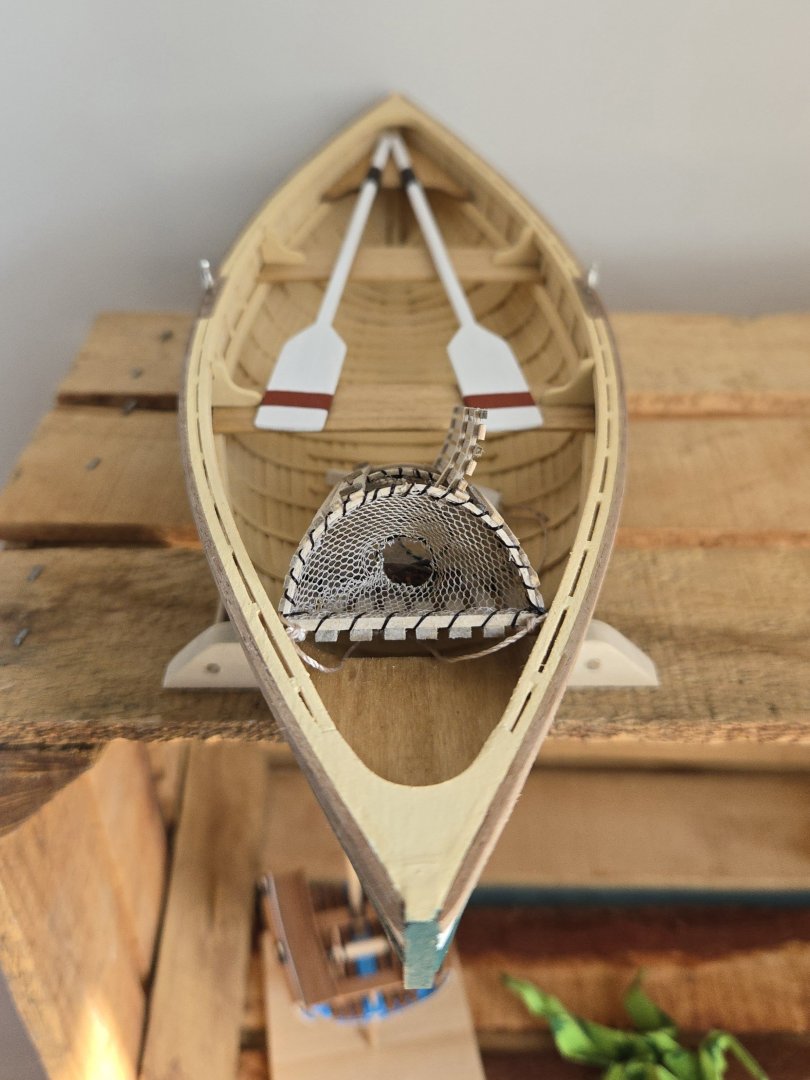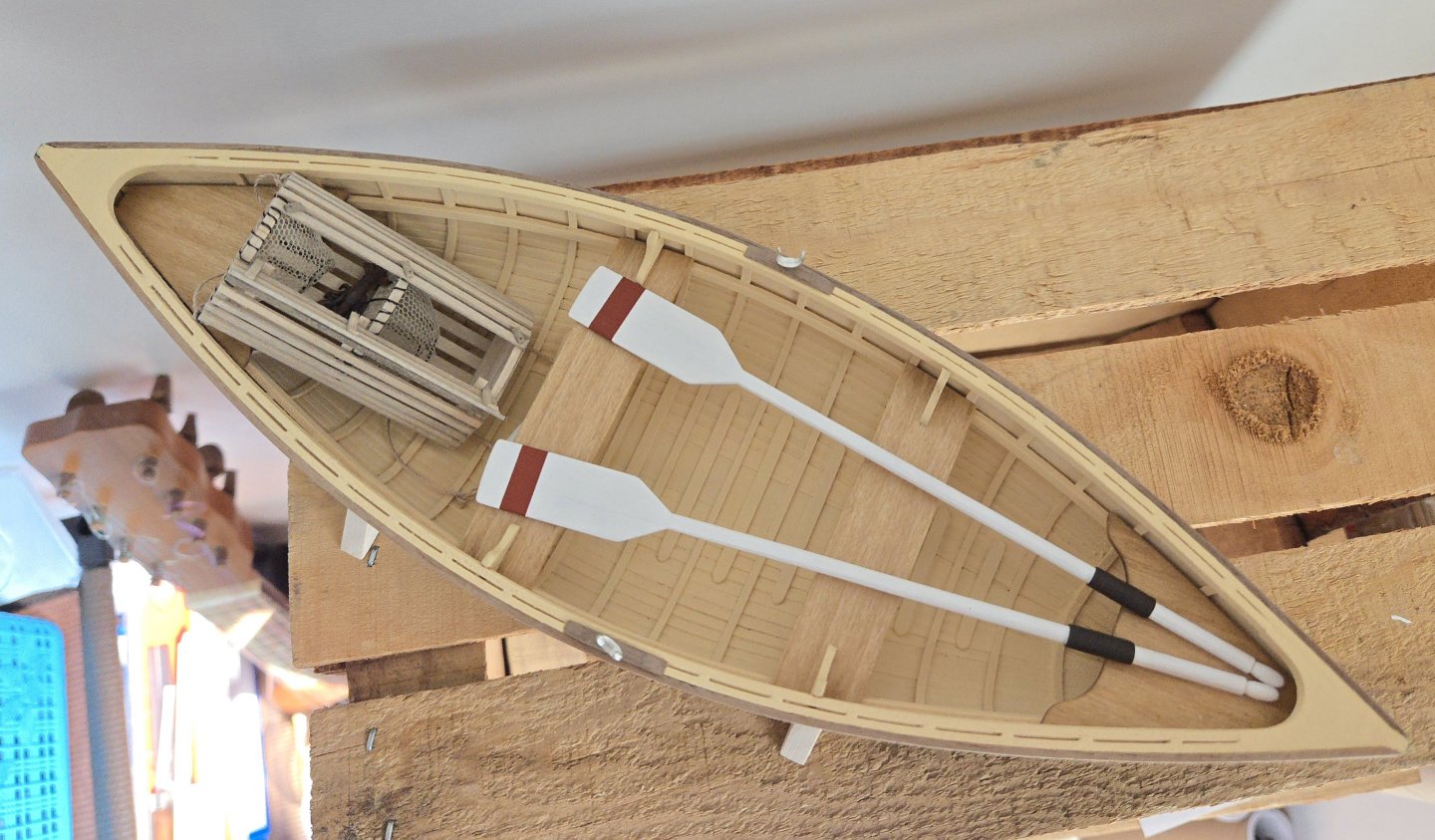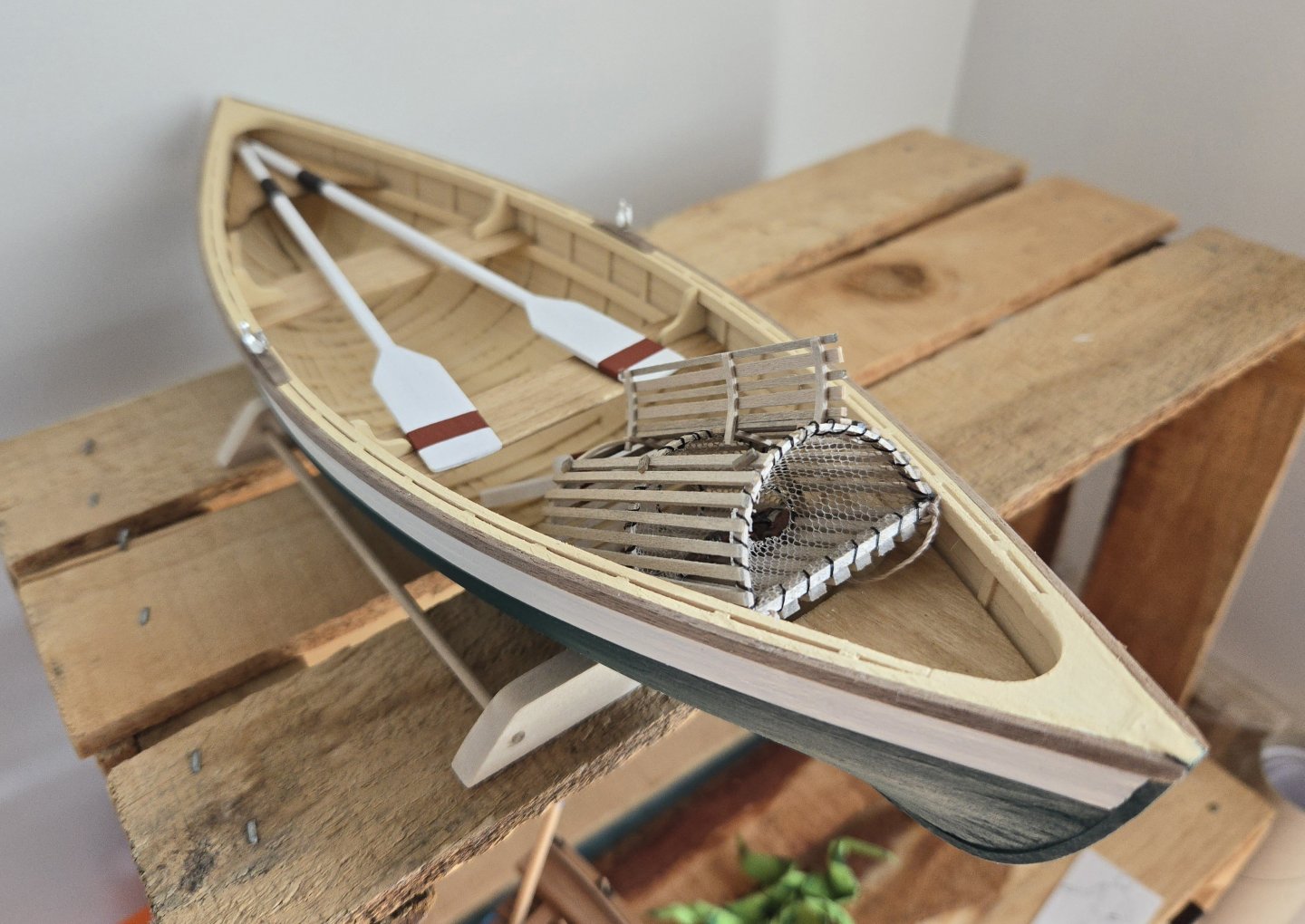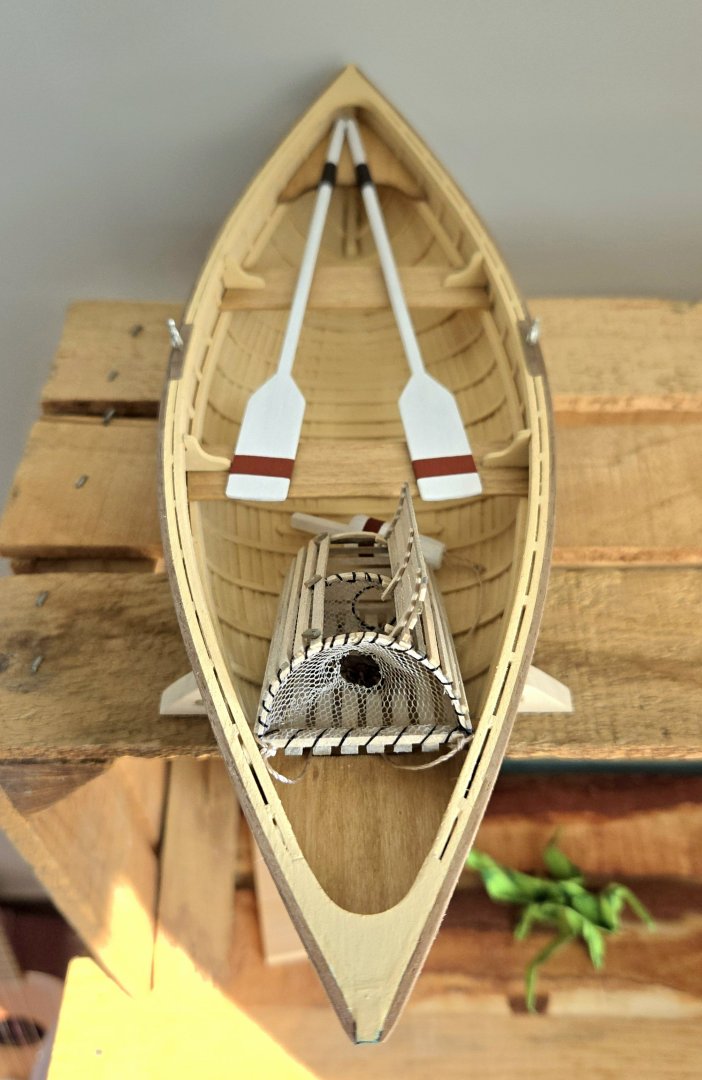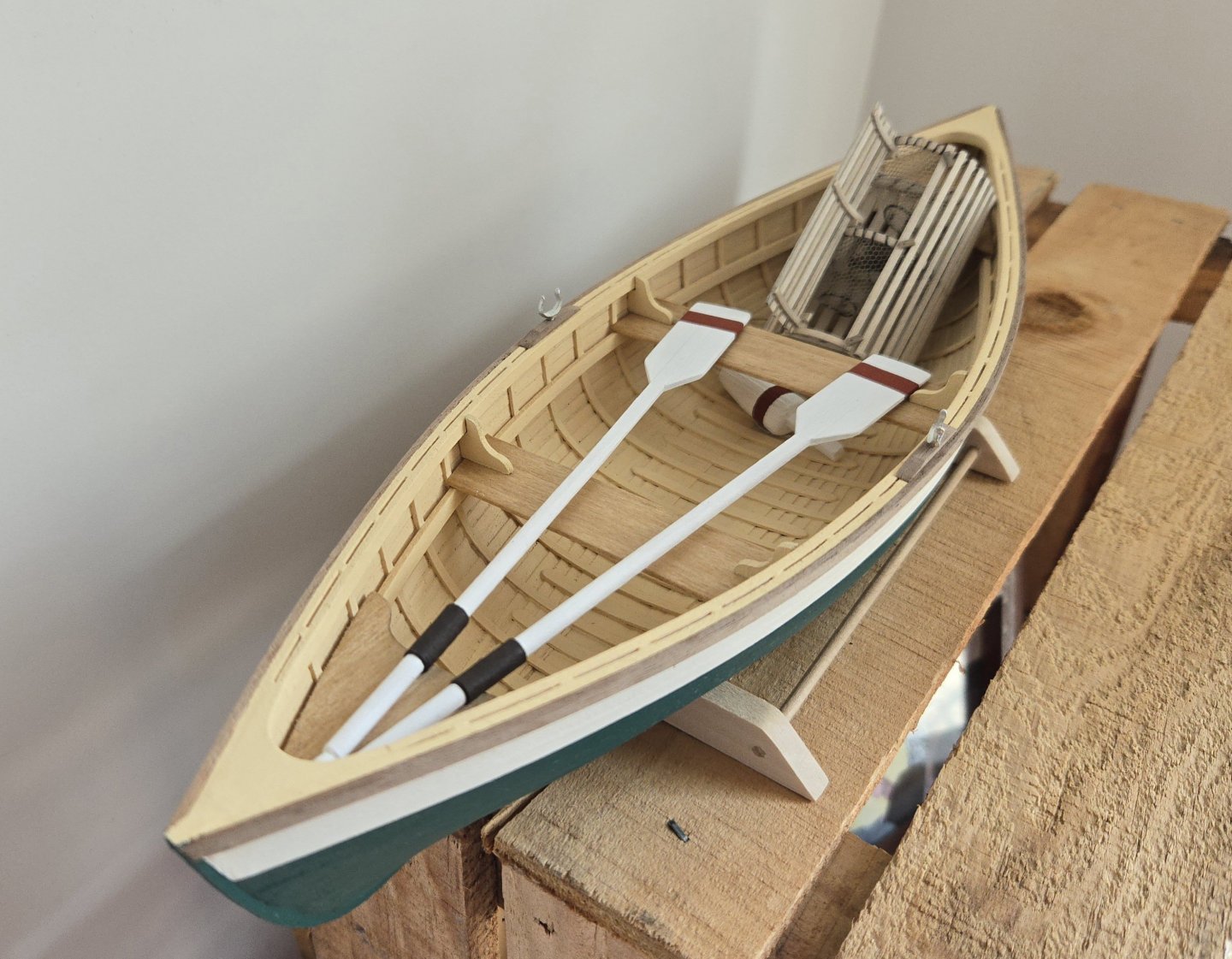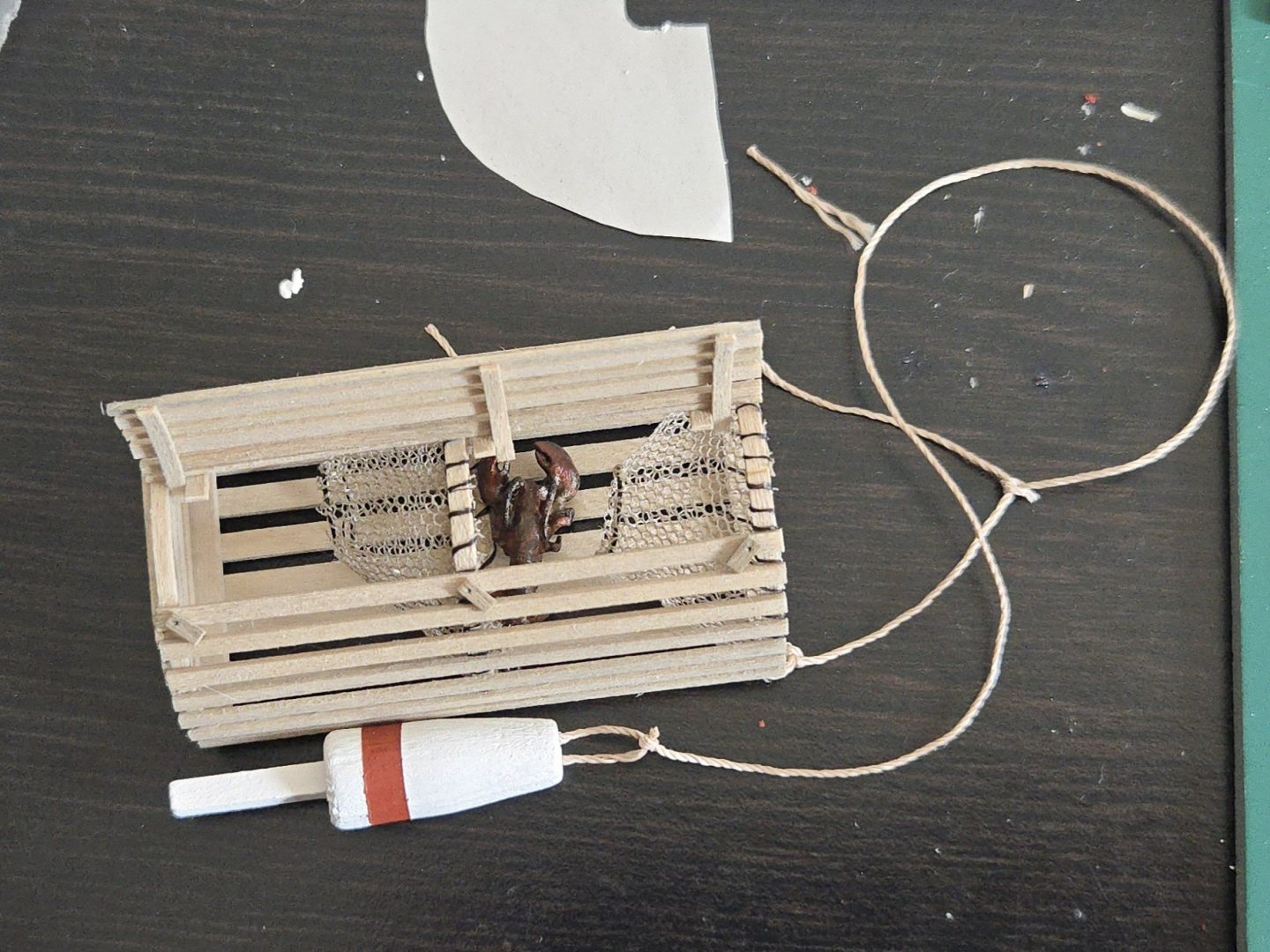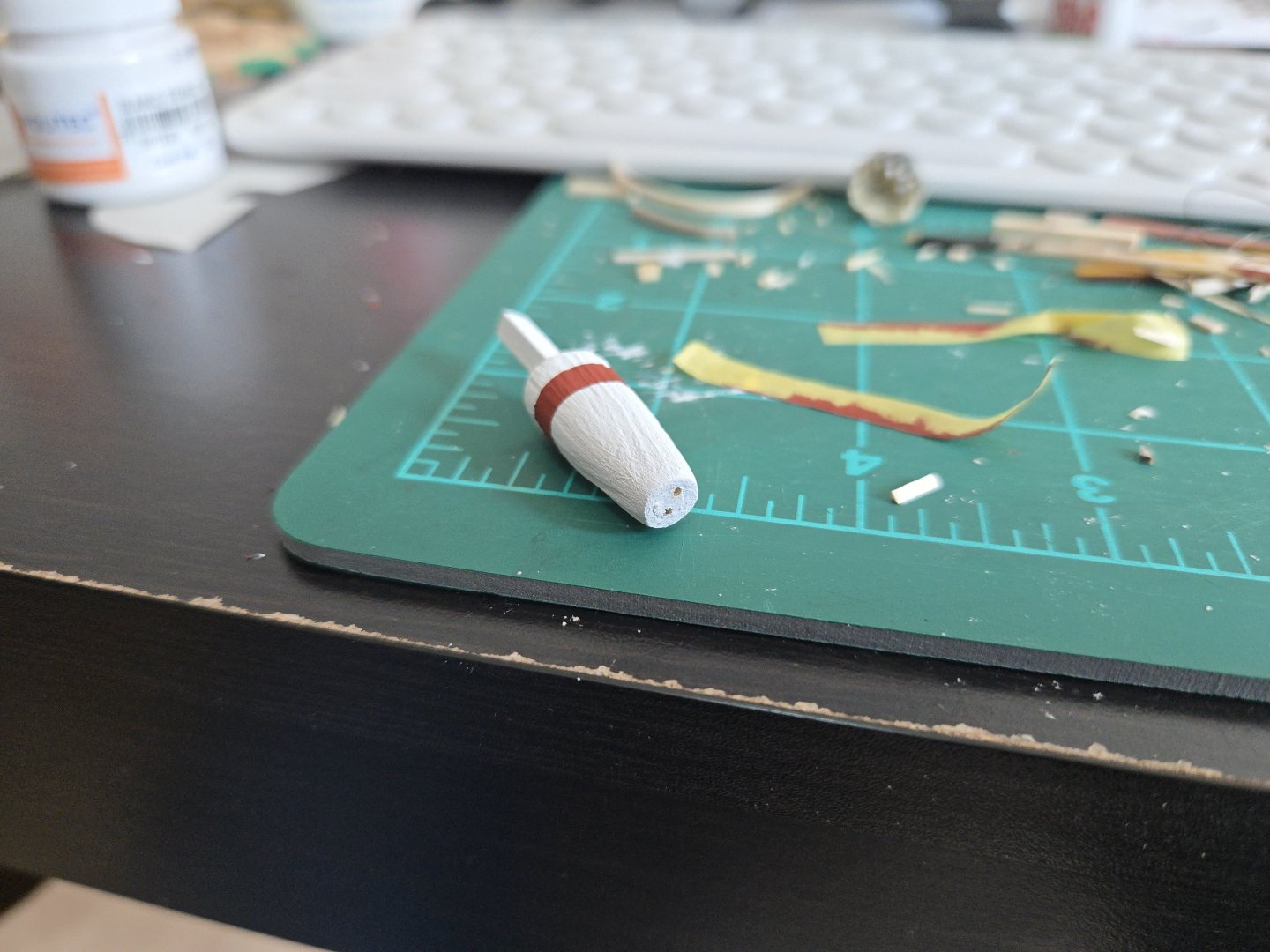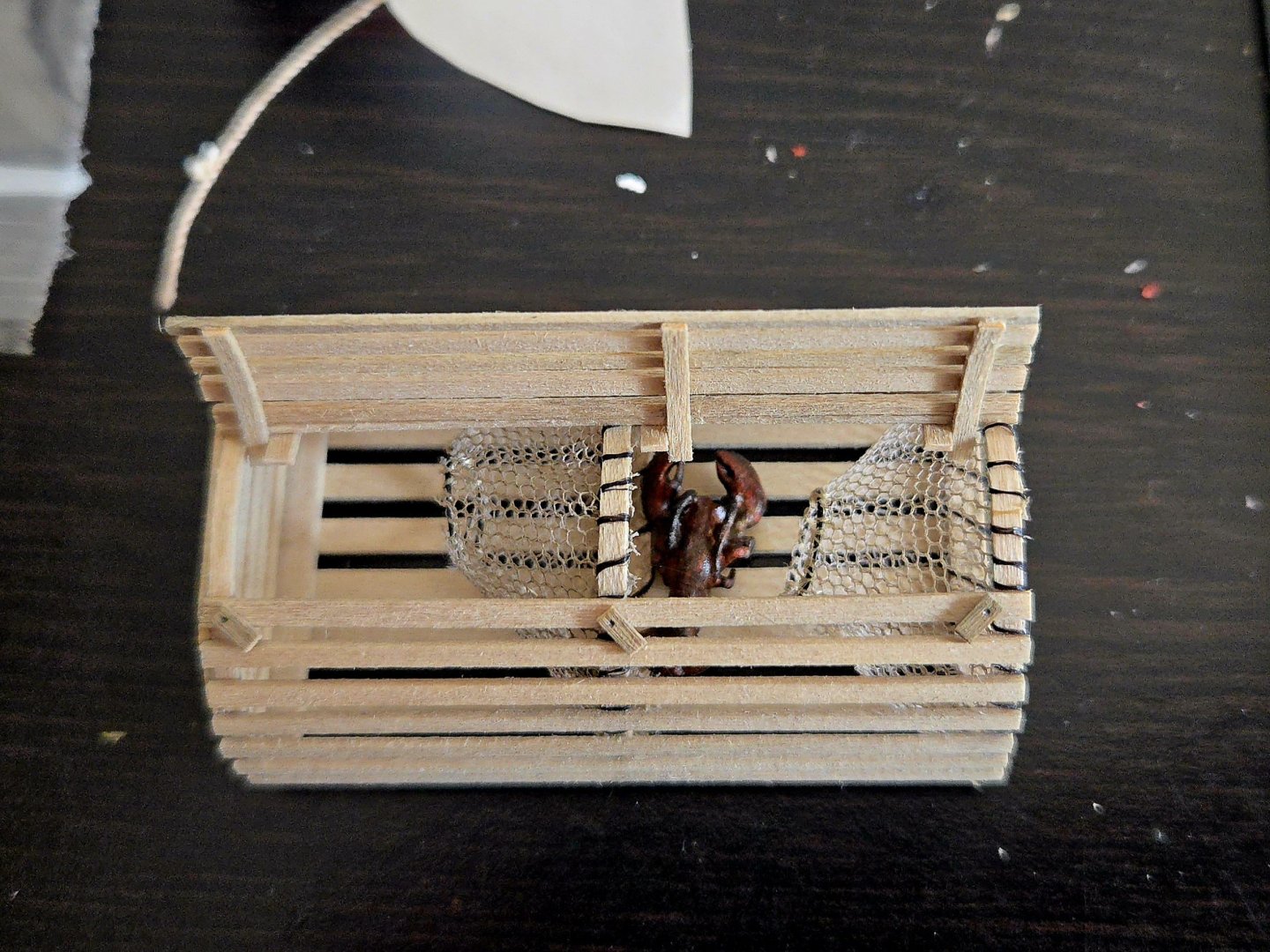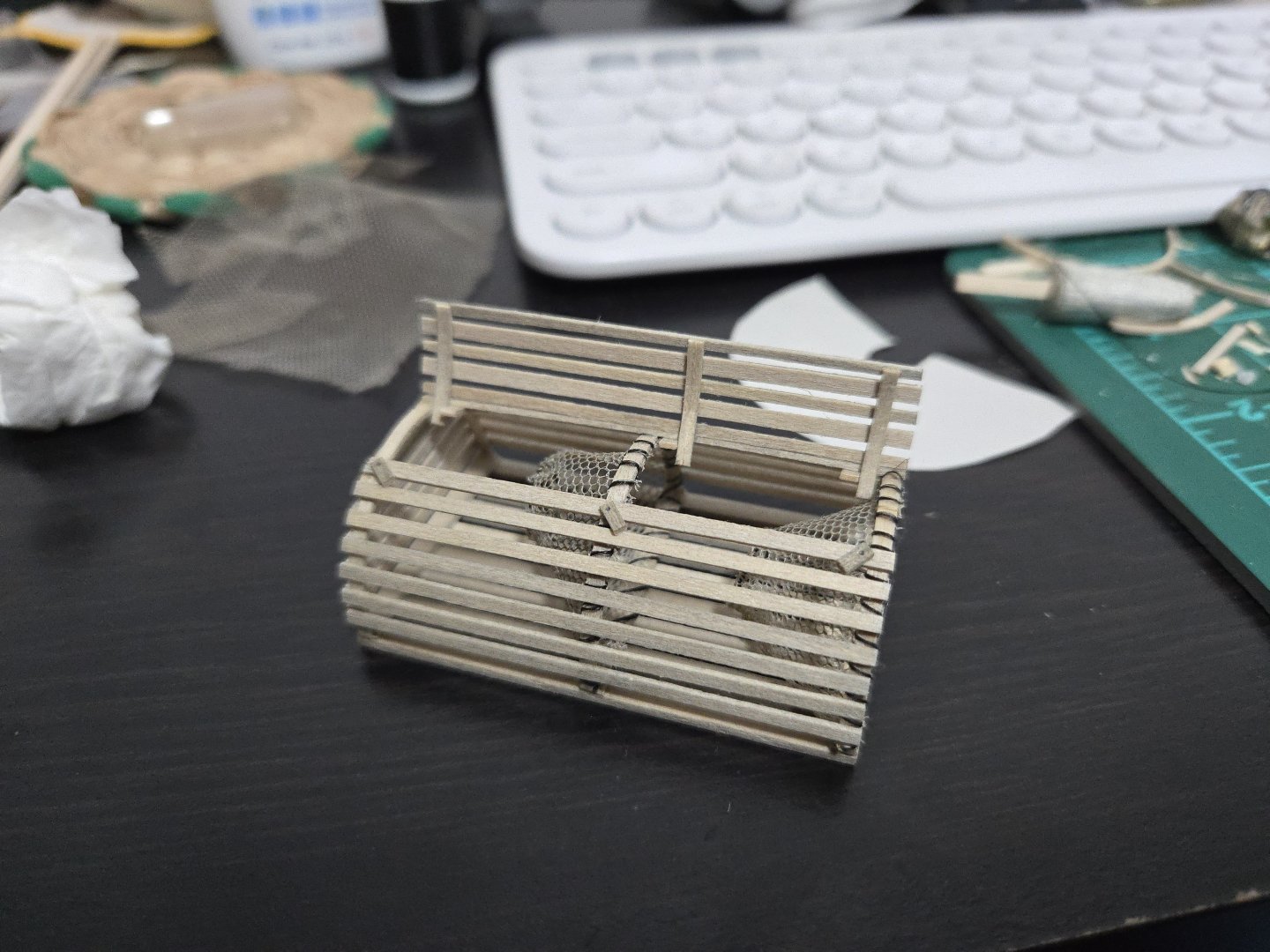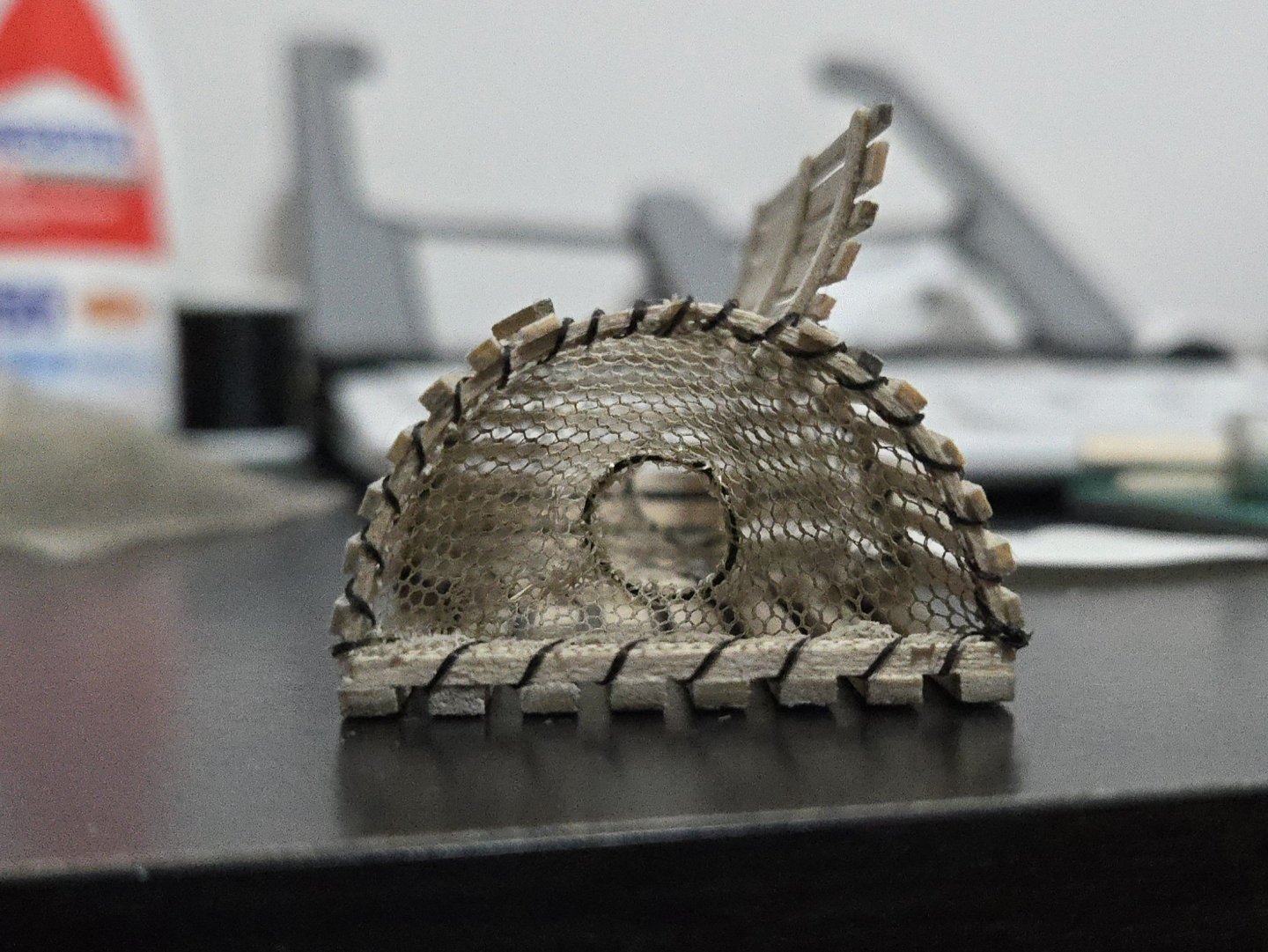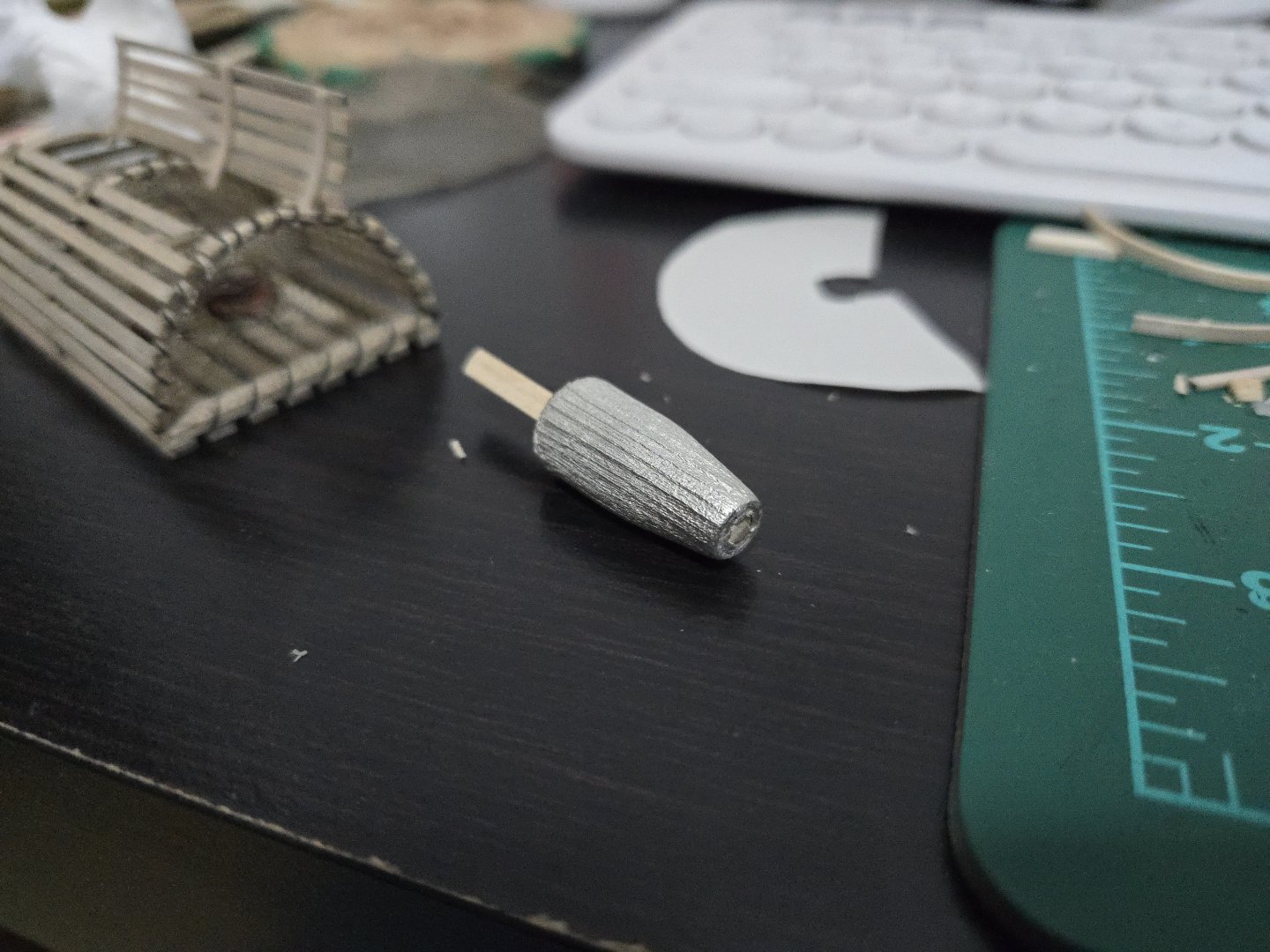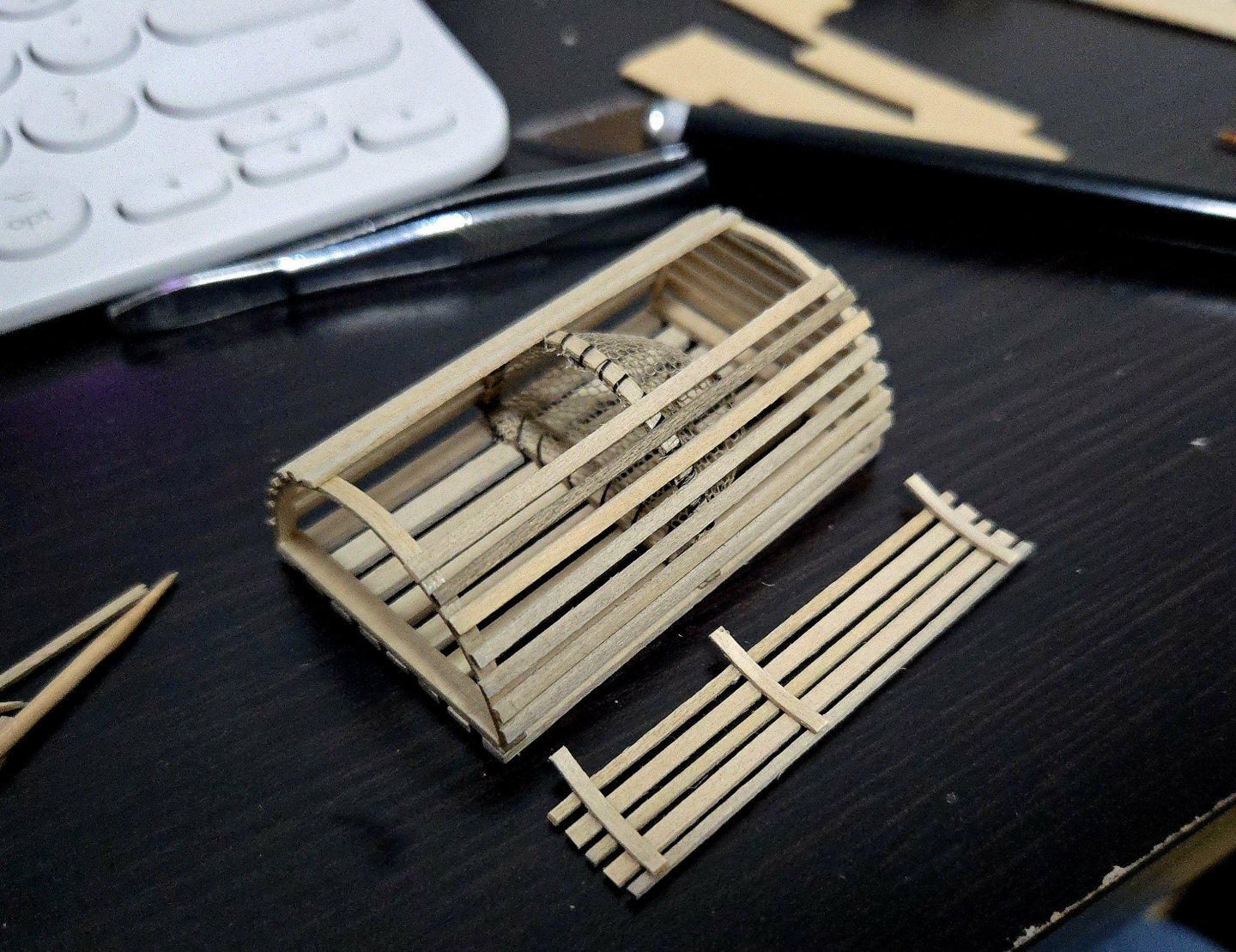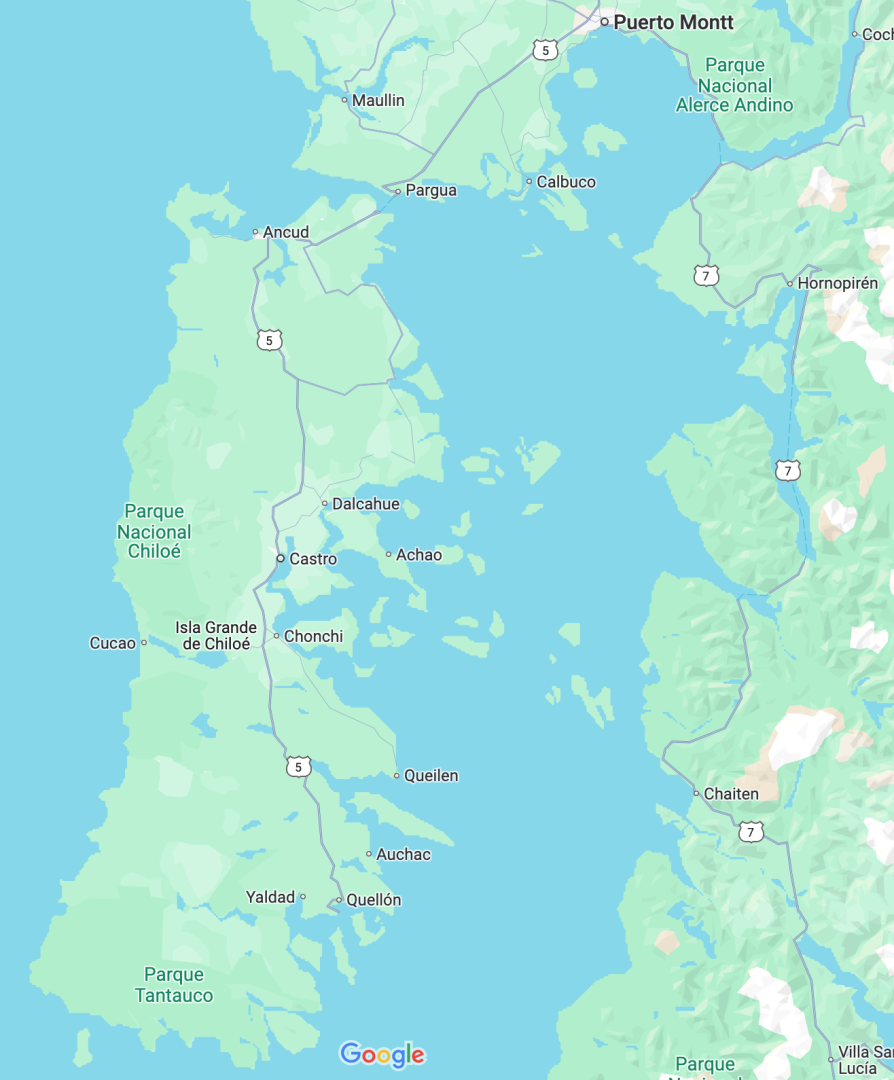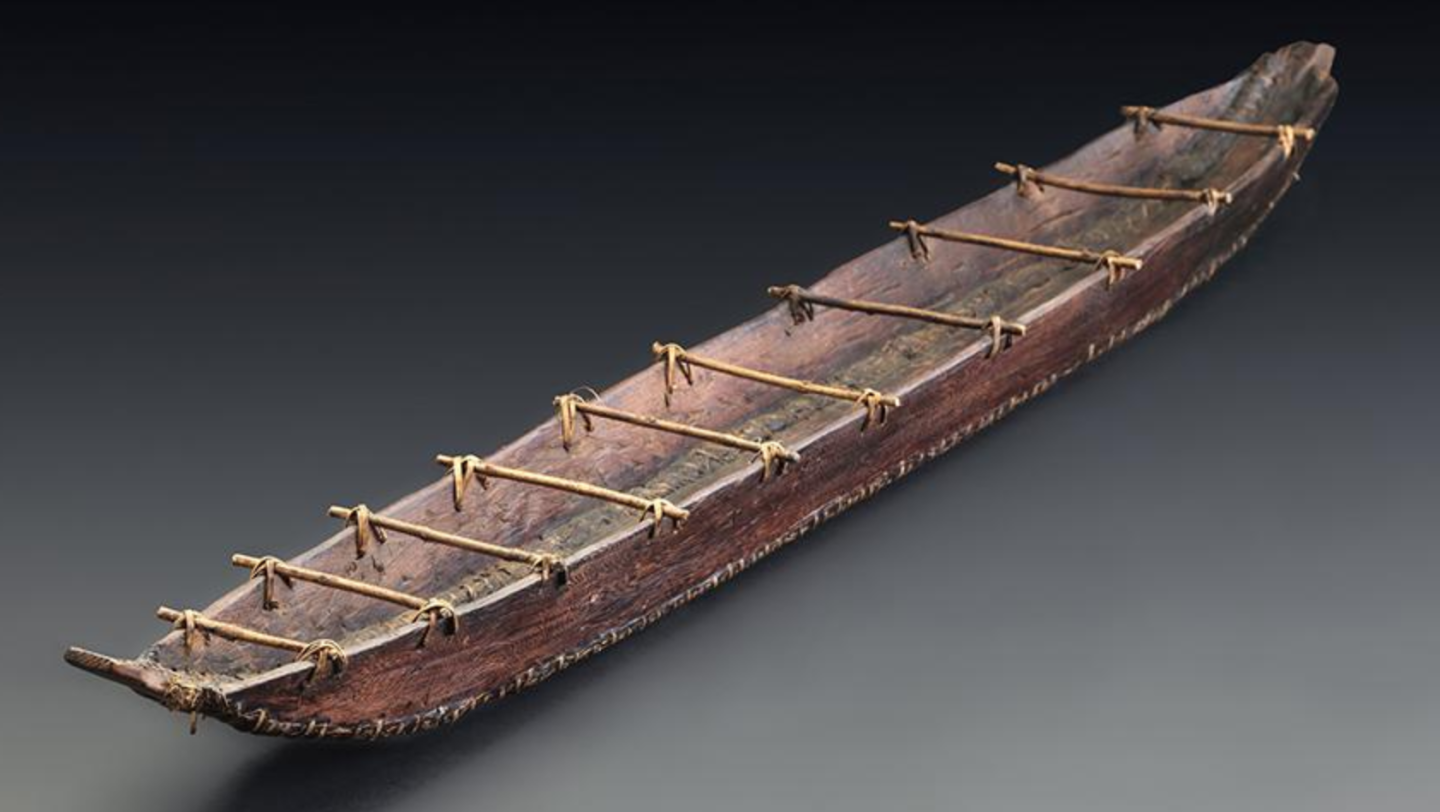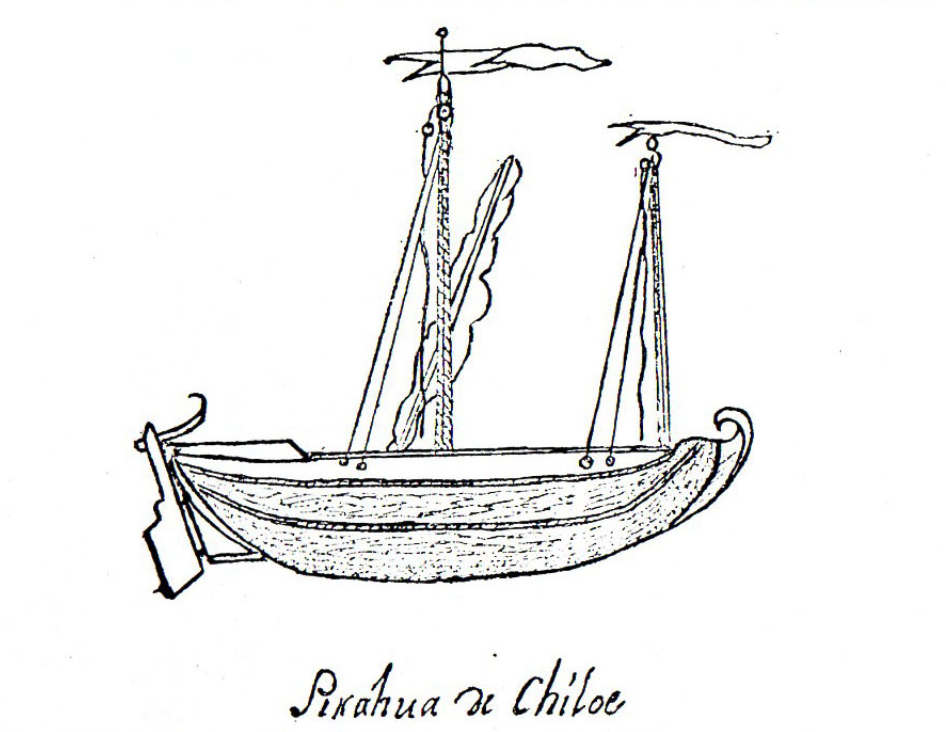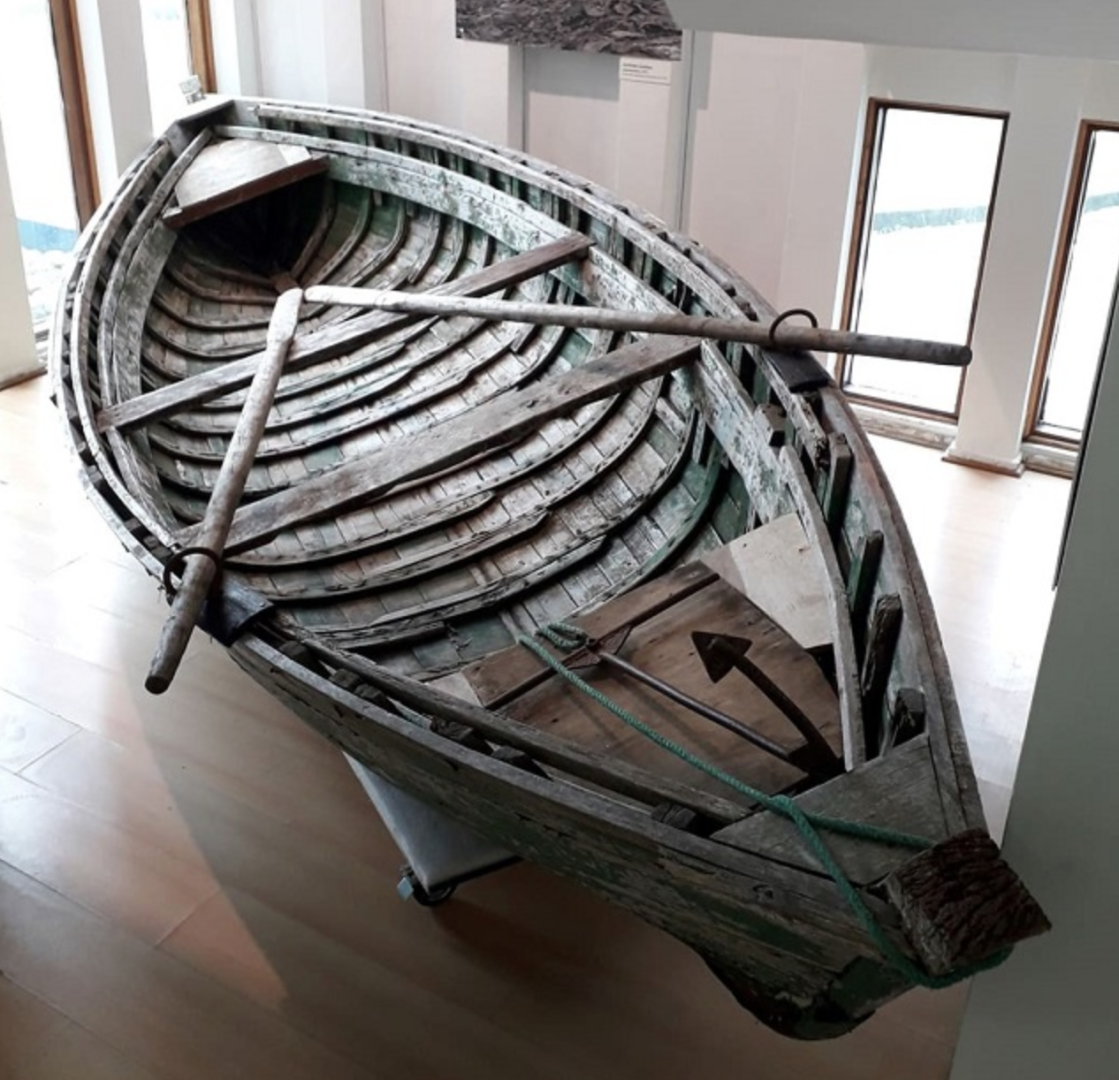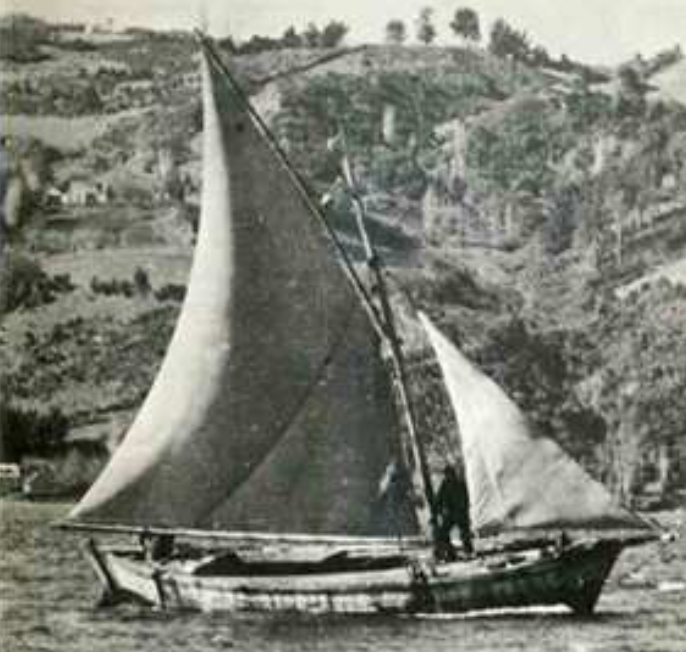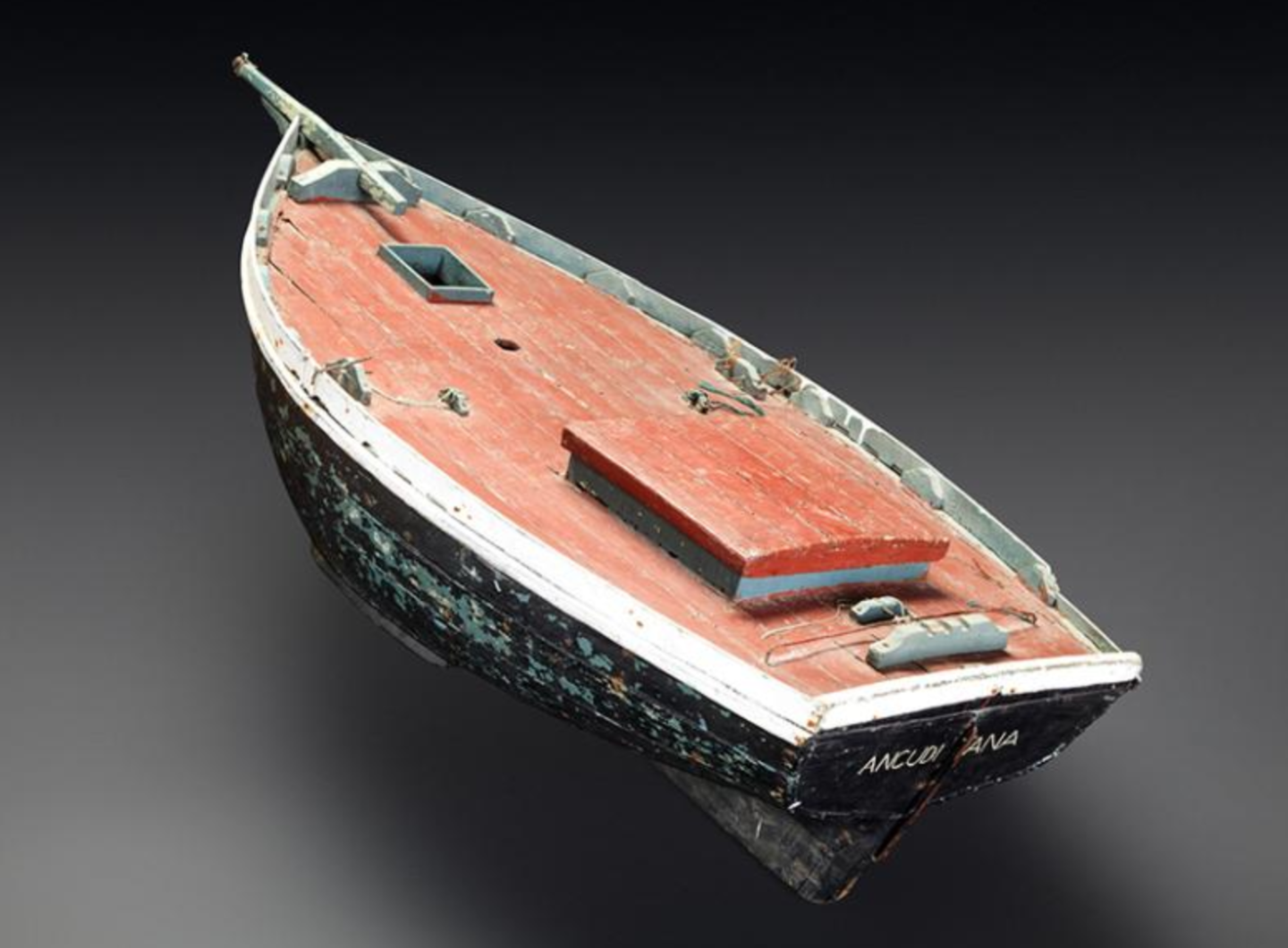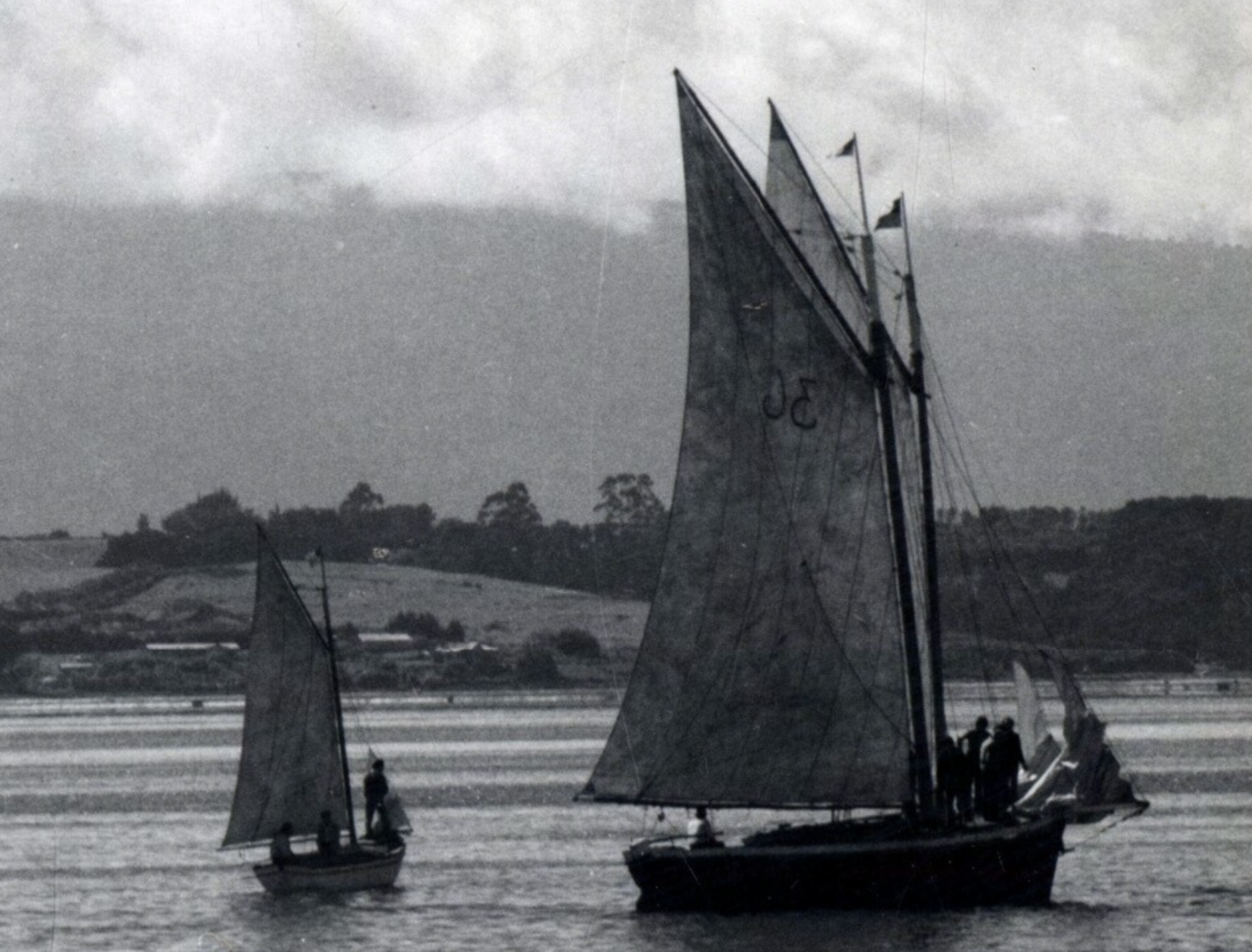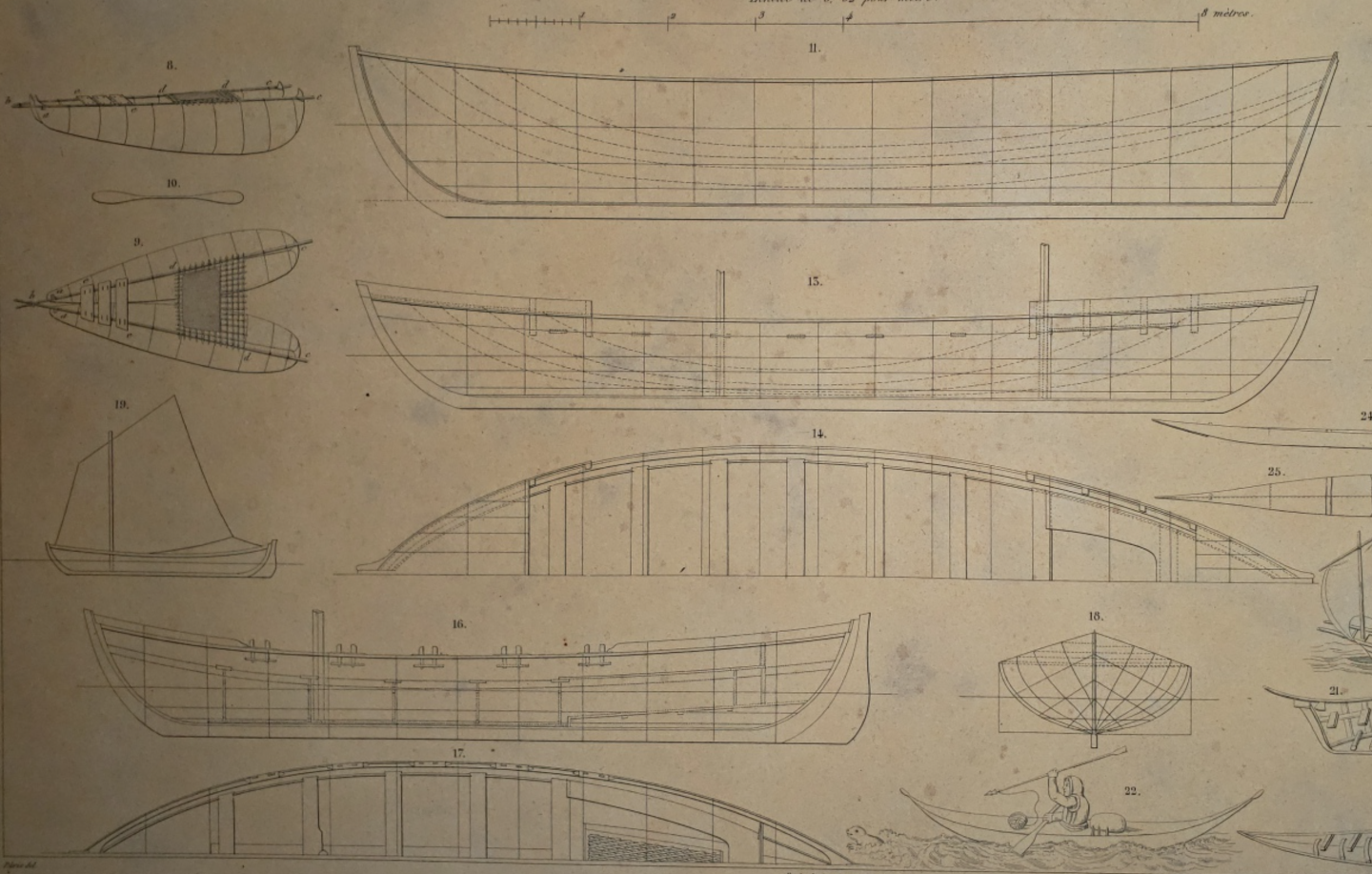-
Posts
1,323 -
Joined
-
Last visited
Content Type
Profiles
Forums
Gallery
Events
Everything posted by JacquesCousteau
-
Thanks! I was able to do that with the ropes tying the oars to the oarlocks, but I had a hard time getting enough pressure into the bottom of the hull around the crossbeams and other parts and so went with glue for some ropes.
- 286 replies
-
Thanks, I'll definitely give that a try! Thanks! I've also glued the fishing equipment into place, pretty much where I originally positioned it. I just moved one of the nets a bit forward so it would be more visible. This has been a straightforward process. The trickiest part has been that some ropes and other parts needed to be glued down so they weren't sticking up unrealistically. One particular challenge was that the chinchorro net's floats couldn't really be pressed down any further and appeared to be floating a bit, as can be seen (not very well, admittedly) below, just next to the mast step: So, I looped up some scrap rope and rolled up some scrap netting to add under it, so it looks more like the floats are just on top of a wadded-up net. I'm still deciding whether to do the rope and the net (first picture), or just the rope (second): In any case, this is the longest I've had the rancho off since I added the rudder, oars, anchor, and other parts, and I don't think it looks half bad. Still definitely going to keep the rancho, though!
- 286 replies
-
A bit of slow, halting progress on at least some parts of the build. Some people have made quite nice sails from tissue paper, so I thought I'd give it a try, as it's very cheap (I picked up several sheets for a few cents). I felt that my first test sail had been a little too cream-colored, so I tried to make it a bit more gray. A tiny drop of black paint goes a long way! I felt the color was a little dark, but I continued anyway as I could at least use it to test the tissue paper. As can be seen below, it seemed very smooth on the tile, but removing it from the tile (which required a bit of water) left it very wrinkled. I decided against adding separate panels or drawing on the panel lines, because I think they will be entirely invisible in the furled sail. I did, though, decide to try adding the reinforcing strips around the edges. Unfortunately, it was quite difficult to add these, or more accurately, to remove the sail once they were added. The attempt led to several rips and tears, and the reinforcements came off in several places. I realized that part of the issue is that the tile backing needs to be thoroughly cleaned after each use. Things stick too well if there's any residue. Having learned that lesson, I decided to keep using the gray sail as a test, while making a new sail in a better color with greater care: I'll see how this goes. I have to say that the tissue paper is much flimsier than the coffee filter (which is an obvious point I suppose).
- 286 replies
-
Good question! I've mainly just used basswood strips, 1/32-inch thick, cut from sheets or scrap, but I've also used 1/16‐inch thick strips as well. Usually I go with something fairly thin, maybe 1/8-3/16-inch wide, and at least 5 inches long or longer. I've also used coffee stir sticks, some of which are 1/32-inch thick birch. In general you just want the batten to be thin enough to flex around the curves. I broke a few battens trying to fair the bow of my half-hull, perhaps soaking them would have helped but in hindsight it was a sign that a bit more fairing was needed.
- 84 replies
-
- half hull planking project
- NRG
-
(and 2 more)
Tagged with:
-
Thanks! At the moment, I'm finishing up a Mexican fishing/cargo lake boat, the Canoa de Rancho, and I just started a build of a Chilean coasting sloop, the Lancha Chilota. I'm hoping to build some more small oar-powered vessels soon, as well.
- 65 replies
-
- Maine Peapod
- Midwest Products
-
(and 1 more)
Tagged with:
-
Thanks, I'm looking forward to seeing how you build it with the sail!
- 65 replies
-
- Maine Peapod
- Midwest Products
-
(and 1 more)
Tagged with:
-
Thank you all for your helpful comments! One tricky aspect of the plans is that they don't say or show anything about the planking thickness or the rabbet (they also don't include a lines plan, just drawings of each bulkhead). They do say that the bulwark should be made of a 2x8mm strip at 1:20 scale, which is a bit under 1/16 of an inch thick at 1:32 scale, but it's not clear if the planking should be the same thickness. So, taking advantage of this build being a generic type model rather than representing a specific vessel, I will plan on adjusting the rabbet for a single layer of 1/32-inch thick planking. This may lead to slightly differently proportions than those given on the plans, but the finished hull should still be a good representation of the type. In any case, I've been using a curved sanding block to finalize the shape of the bulkheads. As I go, I'm marking out a center line on each and using a small square to measure on each side. So far, the frames have been very symmetrical. I've also marked where I'll need to trim back the bow of the backbone to fit the stem.
- 312 replies
-
- Chile
- Latin America
-
(and 6 more)
Tagged with:
-
I didn't see your post until I had already written mine, but I think that we're saying the same thing. My one suggestion is that, instead of adding wood filler to build the corner of Frame H back up, it might be easier to shape some scrap basswood. Very nice job of problem solving!
- 84 replies
-
- half hull planking project
- NRG
-
(and 2 more)
Tagged with:
-
I think the counter is the most complex part of this model, and it doesn't help that the instructions are not very clear. I found it helpful to look at images of completed builds to try to reconstruct what the counter looked like. My sense is that the instruction to not sand the aft edge of frame H until the counter is added later in the build is a little bit of a simplification, because it's impossible to fair the hull without touching H, especially for the complex curves of the tuck stern. I think the main point is that the counter will form a horizontal line across rhe back of frame H, and the outermost edge (where the wale intersects) needs to not be sanded down. But I think it's ok to sand frame H closer to the sternpost in order to fair the stern curves. It might be useful to draw a line to mark where the counter will be placed, in order to not sand past it. Come to think of it, I don't really remember why the counter is supposed to be added later.
- 84 replies
-
- half hull planking project
- NRG
-
(and 2 more)
Tagged with:
-
Now that the log is caught up, there are a few issues I should note and some questions I wanted to ask, as this is my first full-hull POB build. The tl;dr version is that: 1) I screwed up but saved the transom, 2) I need to reshape the backbone a bit, 3) I'm debating single- vs. double-planking with 1/32‐inch thick basswood and would love to hear your thoughts, and 4) I'm considering whether adding a couple stringers would help with fairing the bulkheads, or just make it more complicated. First, I made a mess of the transom. The plans give a hollowed-out transom (like the other bulkheads that, interestingly, doesn't slot into the backbone from above, but from the aft side. I decided to simplify this, making the transom notch like that of the other bulkheads. However, after cutting it to its current position, I realized that I was setting myself up for a very weak transom, as it would have fairly long, narrow sides running along the bottom. I decided that, instead of notching both the backbone and the transom, I would just leave the transom un-notched and do an extra-long notch in the backbone. Unfortunately, before extending the backbone notch (which I still have to do), I forgot about my plans and started cutting a notch in the transom. I remembered midway through cutting. Thankfully, the transom will be planked, so I decided to just fill the saw gap with glue and continue. Hopefully this doesn't make fairing more difficult. If necessary, I can simply cut a new transom. Second, more importantly, I messed up a bit on the backbone. As can be seen, for whatever reason I forgot to remove the amount equal to the separate stem piece from the fore end, so it's too long and I'll need to recut it. Not the end of the world, but a bit embarrassing and a good reminder to double-check before cutting. The photo above also shows another issue. I cut out the backbone a little wide as I was anticipating doing a fair bit of sanding, but I didn't end up sanding nearly as much as I thought I would. So, I need to trim down the bottom of the backbone to bring it to the proper size. (I also need to add a mast step to it). Which brings me to another important issue: how much space I should leave for the rabbet. I originally planned this out for a double-planked hull, as that seemed like the most common way to do POB builds and I was very worried about getting a smooth hull. However, since then, I planked the NRG Half-Hull (yes, this build has been languishing for a while), which is single-planked and unpainted. Although my build has plenty of errors, I was overall happy with how it turned out. So, I'm reconsidering whether it really would make sense to double-plank the lancha hull (especially as 1/32‐inch-thick basswood is not available here, so I'd be using up nearly my entire supply). While I'm sure that I'll make some mistakes, it will be painted black and so I can readily fill in any gaps or flat spots. Looking at other threads, it seems there's been some debate over single- vs double-planking, with many saying that double-planking is often used in kits because it allows you to get away with fewer, widely spaced bulkheads. In this build, the bulkheads are mostly spaced 3/4 of an inch apart, which is pretty close. All of which is to say, I'm currently leaning toward single-planking. However, this will require a much thinner rabbet than I currently have set. I'm curious as to whether it will be possible to change midway through to double-planking if it seems like my hull is turning out too uneven, or if that will be impossible if the rabbet is already full. I also wanted to ask if 1/32‐inch thick planks are going to be too thin. I feel like 1/16 would be hard to shape to these curves, and I don't have 3/64 thick wood. Then again, I used 1/32-thick wood on the Half-Hull. Finally, I'm a bit concerned about getting everything lined up. I was thinking that it might be useful to try adding a stringer connecting the bulkheads, specifically in the corner (I'd just have to carve out a little notch in each corner). I was thinking of a 1/16-inch square strip. My thought is that it would make it easier to see how the hull is lined up. Then again, if I add it before I've faired the bulkheads, it's probably going to be off and will itself need to be faired. And if I add it after the bulkheads have been faired, it seems kinda pointless and like I may as well just add the false deck and start planking. So I'm leaning toward no stringers, but thought I'd see if others had thoughts on the matter. (Another possibility may be to add stringers under the deck extending out in a line from the sides of the main hold, which would in theory be much less difficult to fair.) So, to reiterate, my main questions are about single- or double-planking, whether 1/32-inch thick planking is asking for trouble, and whether adding stringers would actually be helpful or will just make things more complicated. In any case, here's a size comparison so far of the Lancha Chilota to the Canoa de Rancho (which is one foot long). Both are in the same scale. The lancha is shorter, deeper, and much wider. It will also have a significantly taller mast and rig.
- 312 replies
-
- Chile
- Latin America
-
(and 6 more)
Tagged with:
-
The Build After all of that, I’m finally ready to get to the build itself. (Thank you for your patience!) This has been my first POB build, and as will be seen, I’ve already made a lot of mistakes, some of them frankly embarrassing. I include them here so that maybe someone will learn from my errors, as I certainly hope to in future builds. As mentioned in an earlier post, I started work on this several months ago, so this post is about covering what I did then. I began by resizing the plans, which are in 1:20 scale, to my preferred scale of 1:32. I then decided on several modifications. The plan provides for a single piece “backbone” that includes the external keel and stem structure. Rather than keep everything a single piece, I decided to split things into three pieces. An internal backbone—referred to in some logs as a “false keel,” although I’m not calling it that to avoid confusion with an actual false keel—holds together the bulkheads, while a separate keel and a stem piece are scarfed together. Doing it in this way avoids leaving end grain all down the front of the stem, gives me practice with fabricating a keel/stem structure and scarfing pieces together, and also simplifies the construction of the rabbet, which can be placed at the intersection of the keel/stem and the internal backbone. The plans also provide for a very short internal backbone that overlaps very little with the bulkheads. In order to create a stronger joint, I decided to raise up the interior of the backbone a bit, to the maximum height that would allow me to use my razor saw to cut out the bulkhead slots. Later, I realized that it would have been much smarter to have followed the example of other POB builds and make the internal backbone run all the way to the level of the deck, which would help with alignment by making it easy to check the bulkheads’ height. Unfortunately, this will have to wait for my next POB scratchbuild, whenever that is. In order to have a higher backbone and a better connection with the bulkheads, I also somewhat raised the level at which the bulkheads rest on the backbone. In hindsight this was a bit of a mistake because this forced me to also lengthen the slot of the bulkheads, and getting everything properly lined up was challenging. Below, you can see how I drew a few options for this out on the plans. I made the backbone out of 1/8-inch thick basswood, which was readily available in Chicago, and made the keel and stem out of 3/16-inch thick basswood to match the thickness on the plan drawing. Using a thinner backbone leaves a bit of a ledge at the intersection with the keel/stem that will help create the rabbet. I also used a combination of a mini-plane and files to angle the front end of the stem up to near the top, where it becomes squared off again, following what I could see from photos of actual lanchas chilotas. As can be seen, my scarf joint between the keel and stem could be tighter. Given that this model will be painted, I decided that I would just fill any gap and be more careful next time with filing the joint edges flat. (There's also a bit extra on the bottom of the stem that will be sanded smooth with the keel once it's glued in place.) I also modified the plan design for the bulkheads. The plan provides for hollowed out bulkheads that approximate frames with deck beams attached, presumably so that the model’s interior can be shown off through the hatch. However, there are only 10 bulkheads (plus a transom), which is far fewer frames than there would be on a lancha chilota, and each bulkhead would be much thicker than would be accurate to scale. So, I decided to just shut the hatches completely and leave the bulkheads solid, simplifying things a bit and leaving the bulkheads stronger. Lacking power tools, I decided to use a coping saw to cut out the bulkheads from the 1/8-inch sheet of basswood. "How hard could it be," I thought. Well, if you don't actually know how to properly use a coping saw, or have a proper work table, it can be pretty difficult! When I started cutting them out back in Chicago in the spring, I did not have any sort of real work table, and I couldn't clamp the wood to any of my work spaces. I just used my left hand to hold the basswood sheet against the table top or the floor and sawed with my right hand. As a result, my sawing was all over the place (not to mention very tiring). It wasn't a disaster because I was able to finalize each bulkhead with an exacto knife and sanding, but each one required a lot of shaping. Below, you can see two bulkheads on the left made this way--that is, after aggressively shaping them--while the bulkheads at the right show the terrible job I did with just the saw. I ended up leaving about half the bulkheads in rough shape, although I was able to get the others properly shaped. I made the mistake of removing the plan drawings, which I should have kept on for now, as the lines on them would help with proper alignment. When I got to Mexico City, I still didn't have a proper work table. However, as mentioned in my Half-Hull log, I started a carpentry class, and the first thing I learned was how to properly use a fretsaw. There's both a proper sawing technique, and you need a sort of work stand solidly clamped and projecting off of the work table. So, after getting a lot of practice, I took in the rough-cut frames and sawed off the excess with the fretsaw. The results are a million times better (although I probably could have cut slightly wider of the line to leave more leeway for fairing). Lesson learned: you have to use a tool the right way for best results. Obvious, I know, but clearly something I needed to internalize by screwing up first. So, here's the build so far with the bulkheads (and not yet the transom) loose fit. The hull form is apparent. I'm not as precise as a laser cutter, so some are looser than others, but that should allow me to make sure everything is lined up properly. As can be seen, there are a few unwanted dips that will need to be sanded out during fairing. Based on my experience with the NRG Half-Hull, which was a much more complex hull shape, I'm feeling confident that I'll be able to make things work--worst case scenario, some bulkheads may need a little shimming, which isn't the end of the world. This post is already a bit long, so I'll get into some questions and ideas I have for where to go from here in the next post.
- 312 replies
-
- Chile
- Latin America
-
(and 6 more)
Tagged with:
-
Thanks, all! The lobster trap was a lot of fun, making it open was a nice change of pace from the others I've done. Poor lobster indeed, Glen! And poor fishermen, rowing all that way for one measly lobster. Hope he's got some other traps set.
- 65 replies
-
- Maine Peapod
- Midwest Products
-
(and 1 more)
Tagged with:
-
Thanks! The mini-plane has definitely been one of the most useful tools I've bought, even if I still sometimes have trouble figuring out which way to cut with vs. against the wood grain. If I were to redo my oars, I would probably try to taper the sides (and not just the top and bottom) of the oar shaft a bit to where they meet the blades, as I think that would look a bit more elegant than what I did. I might also round off the blade edges a bit more.
-
Looking good! You may want to check further ahead to see if having the bulwarks too low aft will cause problems later in the build. If not, I think the main issue is that the bulwark is sticking out a ways. Before cutting that part off you could try soaking it and seeing if you can bend it (maybe with a pin) to bring it back in contact with the bulkheads.
-
And here's the completed build: Although it took a while to build this when measured from start date to end date, that's mostly because I was quite busy with work/other builds/an international move while making it. Overall, I thought this was an excellent kit. It was a lot of fun to put together, and I think it turned out pretty well. The instructions are generally very good, although they could be clearer on the planking. I found the strip planking system to be pretty easy to do, but it was a challenge smoothing out the interior of the hull. The wood was generally good, while the castings were decent (although I still think a wooden buoy would have worked out better). I do think the suggested lobster trap is very oversimplified and oddly-proportioned, but it's not all that hard to scratch-build something better with the parts. I wouldn't hesitate to recommend this kit.
- 65 replies
-
- Maine Peapod
- Midwest Products
-
(and 1 more)
Tagged with:
-
Thanks, all. This build is finished! (For some reason it gave me trouble when I tried to upload all the pictures, so I'm splitting this post in two.) First up, I finished the lobster trap. The open door was a fun addition. I used the leftover broken hoops to make the curved frame parts. I then glued the door in the open position. I also added some extra framing parts for the hinges, and three small pivoting "buttons" used to secure the door. Finally, I made the front net funnel using the same method as the previous one. As for the buoy, I followed @Desertanimal's suggestion and rounded off part of the wood to fit in the round hole. I decided to simply fill in the front, and drill two joles later for the rope loop. The buoy looks better painted, although the molded-on grain is still a bit excessive (and made it a little tricky to tape off and paint the red stripe). In any case, the buoy will be partly hidden under a thwart, so it's not a problem. I then glued the lobster in place. While it struck me as pretty cheesy when I first got the kit, I have to admit that I warmed up to it. Finally, I attached the ropes to connect the trap to the buoy, using the kit-provided thread.
- 65 replies
-
- Maine Peapod
- Midwest Products
-
(and 1 more)
Tagged with:
-
Very cool! Nice job on the completed builds, and I'm looking forward to seeing following along on the new one. It's fascinating to see the variety of workboats from the Chesapeake, although I have to admit that I don't really know the difference between them all (box stern vs round stern, for example).
-
Very nice job, this looks great!
- 38 replies
-
- Chesapeake Bay Flattie
- Model Shipways
-
(and 2 more)
Tagged with:
-
Very inventive use of the dryer sheet, it looks great!
- 185 replies
-
- Flying Dutchman
- Black pearl
-
(and 2 more)
Tagged with:
-
By now I’ve talked about why I chose to build a lancha chilota, and about what sources I am using to guide the build, but I haven’t talked much about the boat itself. In this post, I’ll be talking more about the lancha itself and its development. I plan on further developing the type’s history and its context in future posts on more specific aspects of the boat, mixed with the discussion of the build. Once I have a few of them, I may add an index to the first post, probably not to track all the parts of the build, but to link to the different posts on contextual information. The Lancha Chilota: History and Context (Anton Daughters’ Memories of Earth and Sea is a crucial source for the contextual information that follows.) Understanding how the lancha chilota emerged requires some geographical and historical context. The type developed not just in response to a particular geographic environment, but also in response to economic, social, and technological changes in the late nineteenth and early twentieth century in the Chiloé region. In many ways, the lancha chilota is a material representation of the changes that reshaped Chiloé in this period, as the region became connected to the market economy and shaped by contact with the rest of the world to a much greater extent than at any earlier point in its history, undergoing the most rapid period of change it had experienced since Spanish colonization centuries prior. The history of how the lancha chilota came to be helps us to understand the meaning of these big-picture developments in people’s day-to-day lives, as they adapted to their changing circumstances as best as they could. The lancha chilota developed in the Chiloé region of southern Chile, just north of Patagonia. In fact, “lancha chilota” (which is pronounced, if you’re curious, like “LAUNCH-uh chee-LOAT-uh”) literally just means “Chiloé-an boat.” (“Chilote” means “person or thing from Chiloé”). The Chiloé Archipelago is dominated by a large island of the same name, but includes dozens of small islands scattered in the Sea of Chiloé to the east of the big island. The archipelago is heavily forested, while the surrounding mainland is mountainous and dotted with fjords, rising rapidly to the peaks of the Andes. To the south, the Gulf of Corcovado separates Chiloé from the Guaitecas Islands and the Chonos Islands. The climate is temperate but rainy and cool. Chiloé today is known for its vibrant cultural traditions, which are quite different from the rest of Chile, as well as its distinct architecture. It’s at the heart of Chile’s fish farming industry, which is today the world’s second-largest. It’s also home to some 400 native varieties of potatoes, a bit of trivia I find astounding. Source: Google Maps. At the time of Spanish colonization, the Chiloé Archipelago was populated by two indigenous groups. The Chono people of southern Chiloé and islands further south were highly mobile and nomadic, living off of the sea, while the Huilliche in the north lived in more sedentary villages and practiced agriculture alongside fishing. For seaborne travel, trade, and fishing, both groups made extensive use of Dalcas, canoes up to 30 feet long made by sewing together planks which could be easily disassembled for transport on land. The dalca was a highly unique vessel: only one other indigenous people in the Americas, the Chumash of California, made use of the sewn-plank technique, although the dalca differed from the Chumash tomol canoe in being made of just three large planks instead of many small ones. Planks were made by using wedges to split logs, and then by laboriously scraping the result to size and shape with stone and shell tools, producing one to two planks per tree. (Here I should note that quite a bit has been written about the dalca, but I’m hoping to model one in the near future, so I’ll save a full discussion for then.) Below: Model of a pre-hispanic Dalca in the Ancud Regional Museum. Source: https://www.museodeancud.gob.cl/galeria/representacion-de-una-dalca After Spanish colonization in 1567, Chiloé became a very marginal colony on the fringes of the empire. The archipelago was largely cut off from the rest of Chile after the Mapuche uprising of 1598 on the mainland north, becoming more connected to Peru instead through an annual trading ship. In fact, after the rest of Chile gained its independence, Chiloé (which was officially transferred to Lima’s jurisdiction in 1767) remained the last royalist stronghold in South America. While food was fairly abundant on the island, there were few other resources for the Spanish to exploit for export besides lumber. The local economy mostly ran on the barter system, and the encomienda labor system used elsewhere in the empire was relatively weak (although encomienda abuses did provoke a Huilliche uprising in 1712, which was bloodily suppressed). Most Chilotes’ livelihoods were based on small-scale farming and fishing, carried out in part through the minga, a Huilliche-origin system of reciprocal obligatory labor (e.g., one day you help out your neighbor with a harvest, and they later help you out, in an endless cycle). Colonial society blended indigenous and Spanish practices—even Spaniards there largely spoke indigenous languages, for instance, and steel and iron were rare enough that most woodworking and lumber production continued to use and adapt indigenous techniques. Chiloé’s wooden churches, which have been listed as a UNESCO World Heritage Site (https://whc.unesco.org/en/list/971/ ), made limited use of nails, for instance. The Spanish also fully adopted the dalca (which they often called a “piragua”), finding it useful not just for cargo hauling and fishing, but also for expeditions to chart the rugged Chilean coast, as its easy disassembly meant it could be hauled overland. Its sewn construction allowed it to be built with minimal use of steel or iron, which were in short supply in the impoverished colony. Observers from even the late colonial period noted that lumber milling continued to employ labor-intensive indigenous techniques due to the lack of other tools. In the colonial era, the dalca was modified by sewing on extra strakes to add to the freeboard and adding square sails, frames, a skeg, and a false stem (all mortise-and-tenoned together), in order to create five- and seven-plank vessels of up to 60 feet long (although smaller three-plank dalcas remained common as well). By 1787, an official census registered some 472 dalcas in the region, among a population of 24,000, and they were vital for communications and trade (Source: Manuel Puente Blanco, “La ‘dalca’ de Chiloé. Su influencia en la exploración austral. Contribución a su studio.” Revista de Historia Naval 15 (1986): 19-44.) Below: Image from 1793 of a two-masted, seven-plank colonial dalca. Source: Image shown in Puente Blanco, “La ‘dalca’ de Chiloé,” pg. 29. As Daughters argues in Memories of Earth and Sea, many colonial patterns continued well after independence. Chiloé remained marginal to Chilean society, and the economy continued to be dominated by small-scale farming and fishing, barter, and the minga reciprocal labor system into the twentieth century. Settlements were widely scattered across the archipelago, and land transport remained limited until quite late, making sea transport necessary. Cultural identities remained quite distinct from the rest of Chile, too, with Chiloé developing its own folklore and maintaining many colonial-era customs. However, there were some changes in the late nineteenth and early twentieth century that are important to understanding how the lancha chilota developed. Daughters doesn’t place very much emphasis on them, because he’s trying to explain the broad sweep of Chilote history and finds the Pinochet dictatorship of 1973-1990—which witnessed the decline of small farming, boom and bust cycles in the fishing industry, the rise of large-scale fish farming, and practically a complete shift to wage labor—to be much more transformative of Chiloé overall. His view is solidly supported, but the lancha chilota’s emergence is only explicable if we look at what changed earlier in the late nineteenth and early twentieth century. The population of the region—especially on the nearby mainland—grew from the mid 1800s onward, especially as the Chilean government promoted the formation of colonies of European immigrants to develop what was then a frontier region. Economy and society also changed. While the minga wasn’t wholly replaced, the economy slowly began to shift from barter to cash, although this transition was still only partial by 1900. Cash was useful for buying tools and goods, especially ones that were produced elsewhere in the country (or were imported) and which increasingly became available in major markets, especially in ports like Puerto Montt. Faced with a growing need for cash, but living on a cash-poor island with a largely subsistence-based economy, many Chilotes began to seasonally migrate to the mainland for itinerant work. Many found their way into the lumber industry centered on cypress production in Patagonia and mainland Chiloé, as demand for lumber skyrocketed with railway construction, Chilean economic growth, and foreign investment. New technologies were also implemented, albeit slowly, with a narrow-gauge railway being constructed on the island in 1911 and national railway lines reaching Puerto Montt around the same time. The growing lumber industry also undoubtedly made new milling tools and standardized planks much more widely available. So, in the late 1800s and early 1900s, Chiloé was in something of a transition, becoming less autarkic with increasing trade (still largely in lumber) around the archipelago and with the mainland and with growing connections with the rest of Chile and the outside world. In this context, the dalca, which continued to be used well into the 1800s, gradually came to be replaced. The dalca’s decline was due to several factors. While there was growing demand for trade and transportation, dalcas were not very efficient cargo haulers, being long and narrow with little cargo capacity, requiring a large crew to row whenever they needed to travel upwind, and often being leaky enough to require a dedicated bailer. At the same time, dalcas also required very large planks, given that each plank had to stretch the entire length of the vessel, but the growth of the lumber industry likely meant that smaller, more standardized planks became much more common and more efficient to use. Finally, with growing trade in the region, metal fasteners likely became much more common, obviating the need for sewn construction. Under these pressures, the dalca disappeared, taking with it knowledge of an entire boatbuilding tradition. The dalca was replaced by a number of new types of vessels constructed according to European-style plank-on-frame techniques, of which the lancha chilota was just one. Chiloé was an important center in the whaling industry in the early-mid 1800s, and the Euro-American whaleboat influenced the development of the double-ended open Chalupa, and its larger, partially decked cousin, the sloop-rigged Chalupón. These became common around the region and further south, often being used for fishing, sealing, and in the lumber trade. (The chalupa and chalupón have been the subject of an interesting and informative recent book: Felipe Rodríguez Cerda, Casa-mar. La chalupa a vela en la Patagonia insular occidental. Santiago: Servicio Nacional de Patrimonio Cultural, Colección de Etnografía, 2022. It discusses the impact of the whaling industry on the development of the chalupa on pages 56-63, and the Patagonian lumber industry in the late nineteenth century and its use of small vessels on pages 68-73. The book is available for legal download here: https://www.investigacion.patrimoniocultural.gob.cl/publicaciones/casa-mar-la-chalupa-vela-en-la-patagonia-insular-occidental ) Below: Replica chalupa in the Ancud Regional Museum. Source: https://www.surdoc.cl/registro/22-1160 Below: Chalupón under sail. Note that the vessel is double-ended and only partially decked, unlike the lancha chilota. Source: Trace Gale, Gabriela Espinoza, and Jimmy Valdés. “Expediente: construcción-navegación en chalupa a vela Guaitecas-Zona Litoral.” Consejo Nacional de la Cultura y las Artes; Centro de Investigación en Ecosistemas de Patagonia. 2013. The lancha chilota also developed in this period, specifically for the coastal trade. Its development was a material marker of Chiloé’s changing economy and society in the late nineteenth and early twentieth centuries. As Felipe Rodríguez Cerda suggests for the Chalupa (pg. 73), the lancha responded to the growing need, with expanding trade and the rise of the market economy, for a more seaworthy vessel than the dalca, as well as to changing woodworking techniques and the growing availability of new materials with the development of the lumber industry and trade in metal fittings and fastenings. The lancha seems to have been more specialized for cargo hauling than the jack-of-all-trades chalupa. It had a broad hull to maximize cargo space, a prominent main hatch to allow easy cargo handling, a full deck to protect shipments and passengers, and a gaff rig for weatherly sailing. The lancha was also relatively simple to build in isolated settlements, which was a must—while there were some larger vessels and bigger businesses in the lumber trade, most lanchas were family affairs, as Hollander and Mertes’ The Last Sailors makes clear. It could also be sailed with minimal crew, being much more efficient in this regard than the dalca, which, being keelless, had required a number of rowers to move against the wind. Lanchas were usually around 8-10 meters (26-33 feet) in length and quite beamy, with a relatively shallow hull and the ability to be safely beached at low tide—they had a sort of bumper plank, called a “guarda playa,” around the turn of the bilge for this purpose. Although I’ll deal with the question of origins in a later post, the lancha may have been directly influenced by nineteenth century European designs, possibly through immigration to the region. Below: Model from 1976 of a lancha chilota, displaying the type’s beamy, capacious hull form. The guarda playa “bumper” plank is just visible at the turn of the bilge. Ancud Regional Museum. Source: https://www.museodeancud.gob.cl/galeria/modelo-de-lancha-chilota The lancha chilota was extensively used, as photos showing crowded harbors attest, hauling cargo and carrying passengers around the archipelago for decades. The inhabitants of isolated towns often traveled by lancha, crowding into its spartan hold and huddling around the small stove that was usually carried, on their way to larger port cities like Puerto Montt to sell firewood and other products, and to buy goods that they couldn’t easily produce themselves—tools, consumer items, eventually mass-produced clothing, etc. For many, the lancha was the crucial link between their home communities and the wider world. In a very practical sense, their experience of what it meant to live in the modern world was created through the lancha (and similar vessels like the chalupón) and the increased connections that it fostered. At the same time, as explained above, the lancha itself was the product of these same processes of change, encapsulating new building techniques, the availability of new materials, and displaying influences from beyond Chiloé’s shores. The lancha chilota’s heyday lasted for several decades before coming to an end. The design underwent some changes over the years that I’ll discuss in a later post, until being replaced by motor vessels in the 1960s and 1970s. Expansions in terrestrial transportation also put pressure on seaborn trade—indeed, one lancha owner documented by Hollander and Mertes in The Last Sailors happily noted that he wanted to sell his vessel as firewood because he now had a steady job nearby in highway construction—although the rugged terrain and sheer number of islands mean that Chiloé continues to be a highly maritime society. Today, there is renewed interest in the lancha for a number of reasons. Its revival is seen as a way of spurring tourism and the economy while helping preserve traditional woodworking skills and techniques, at a time when Chiloé has been quite thoroughly changed by the rise of the cash economy and the development of large-scale fish farming. (It’s interesting that the lancha has received much greater heritage and reconstruction interest than, say, the dalca or the chalupa. It may be that its decked construction makes it a more complex expression of the boatbuilder’s craft than an open vessel like the chalupa, and some builders still survive, unlike with the dalca. Perhaps it’s also that its design is more readily adapted to include a roomy cabin to serve as a yacht.) Interestingly, many workboats in Chiloé continue to be made of wood to the present day, with many motor vessels sharing similar hull designs and construction techniques with the lancha. Below: Two lanchas and a smaller vessel near Puerto Montt in 1959. Source: Lanchas chilotas. 1959. Photographer: Domingo Ulloa (1925-2018). Available in: Archivo Fotográfico. Biblioteca Nacional Digital de Chile https://www.bibliotecanacionaldigital.gob.cl/bnd/635/w3-article-164290.html So, while the lancha chilota is a “traditional” workboat, it’s hardly timeless. Viewed from one angle, it’s just one chapter of many in Chiloé’s long history with the sea; viewed from another, the lancha’s rise marked a major shift in that relationship. Its development, and its specialized cargo-hauling design, tracks changes in and around Chiloé as the region became more closely tied to the market economy and global flows of people, capital, and technologies. The lancha was both the vehicle through which Chilotes experienced these changes, and itself a product of them.
- 312 replies
-
- Chile
- Latin America
-
(and 6 more)
Tagged with:
-
That's an excellent point, and in fact the whaleboat seems to have been a strong influence on Chilote vessels, although less the Lancha Chilota than other types. Whaleboats (and vessels derived from them) also were widely used elsewhere for coastal trade and fishing. They were used, and still are in use today, at Santa Catarina Island in Brazil for fishing, as described and extensively photographed in Joel Pacheco's A canoa baleeira dos Açores e da Ilha de Santa Catarina (Florianópolis, 2009). François-Edmond Pâris includes plan drawings of two "whaleboats" used for coastal trade in Montevideo, Uruguay, in his 1841 work Essai sur la construction navale des peuples extra-européens and briefly discusses their sailing qualities. (They're at center-right and bottom-left in the image below). In fact, the Musee de la Marine has a model of the two-masted whaleboat: https://mnm.webmuseo.com:8443/ws/musee-national-marine/app/collection/record/8909?vc=ePkH4LF7w6iejEyVcCaVlABg1YJaCRaW5meiVZdGFvC6F66eYJADAFHpLgQ$ There's definitely something to be said for the whaling industry as a factor in the global spread of certain vessel types and construction traditions.
- 312 replies
-
- Chile
- Latin America
-
(and 6 more)
Tagged with:
About us
Modelshipworld - Advancing Ship Modeling through Research
SSL Secured
Your security is important for us so this Website is SSL-Secured
NRG Mailing Address
Nautical Research Guild
237 South Lincoln Street
Westmont IL, 60559-1917
Model Ship World ® and the MSW logo are Registered Trademarks, and belong to the Nautical Research Guild (United States Patent and Trademark Office: No. 6,929,264 & No. 6,929,274, registered Dec. 20, 2022)
Helpful Links
About the NRG
If you enjoy building ship models that are historically accurate as well as beautiful, then The Nautical Research Guild (NRG) is just right for you.
The Guild is a non-profit educational organization whose mission is to “Advance Ship Modeling Through Research”. We provide support to our members in their efforts to raise the quality of their model ships.
The Nautical Research Guild has published our world-renowned quarterly magazine, The Nautical Research Journal, since 1955. The pages of the Journal are full of articles by accomplished ship modelers who show you how they create those exquisite details on their models, and by maritime historians who show you the correct details to build. The Journal is available in both print and digital editions. Go to the NRG web site (www.thenrg.org) to download a complimentary digital copy of the Journal. The NRG also publishes plan sets, books and compilations of back issues of the Journal and the former Ships in Scale and Model Ship Builder magazines.




